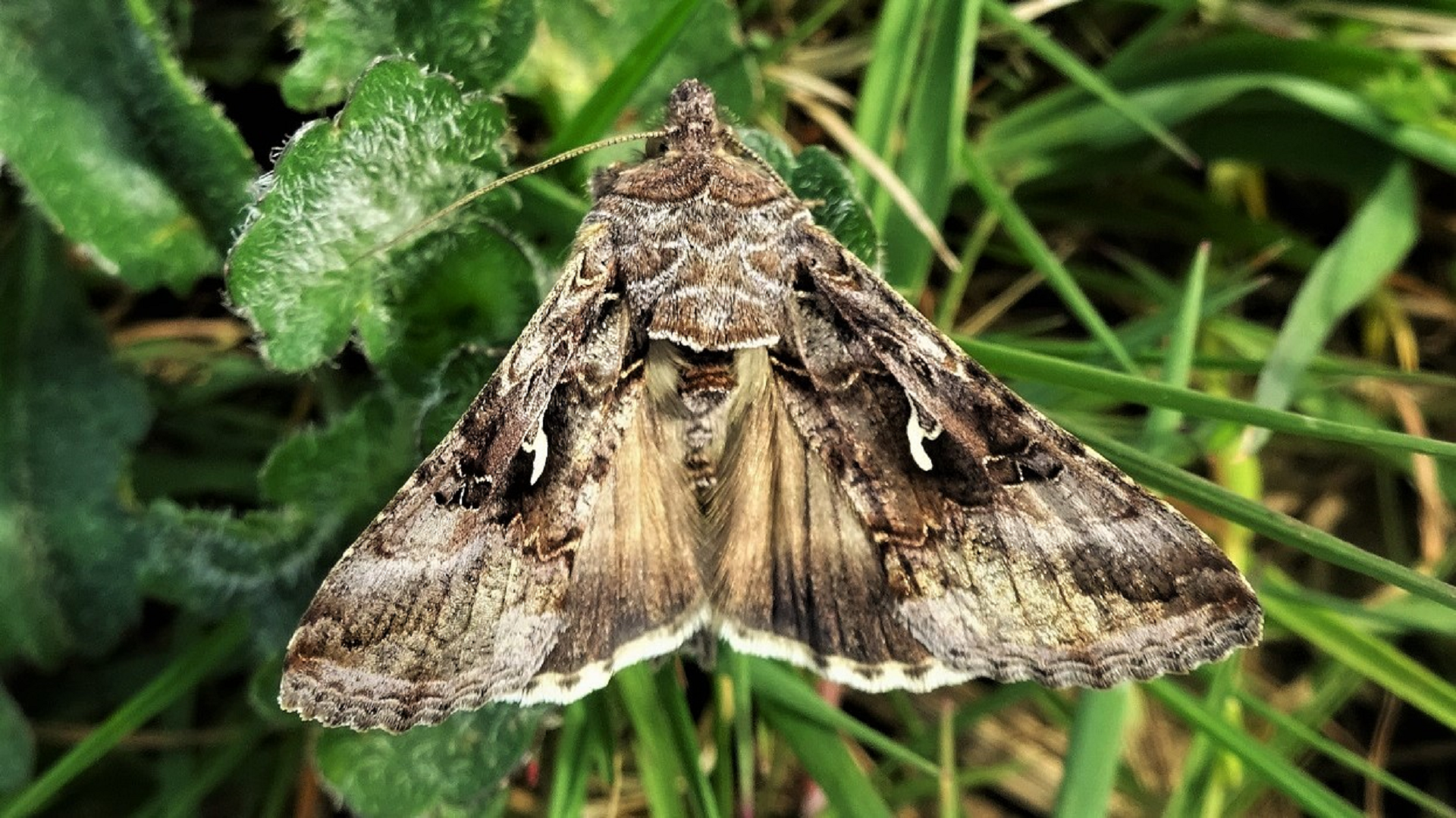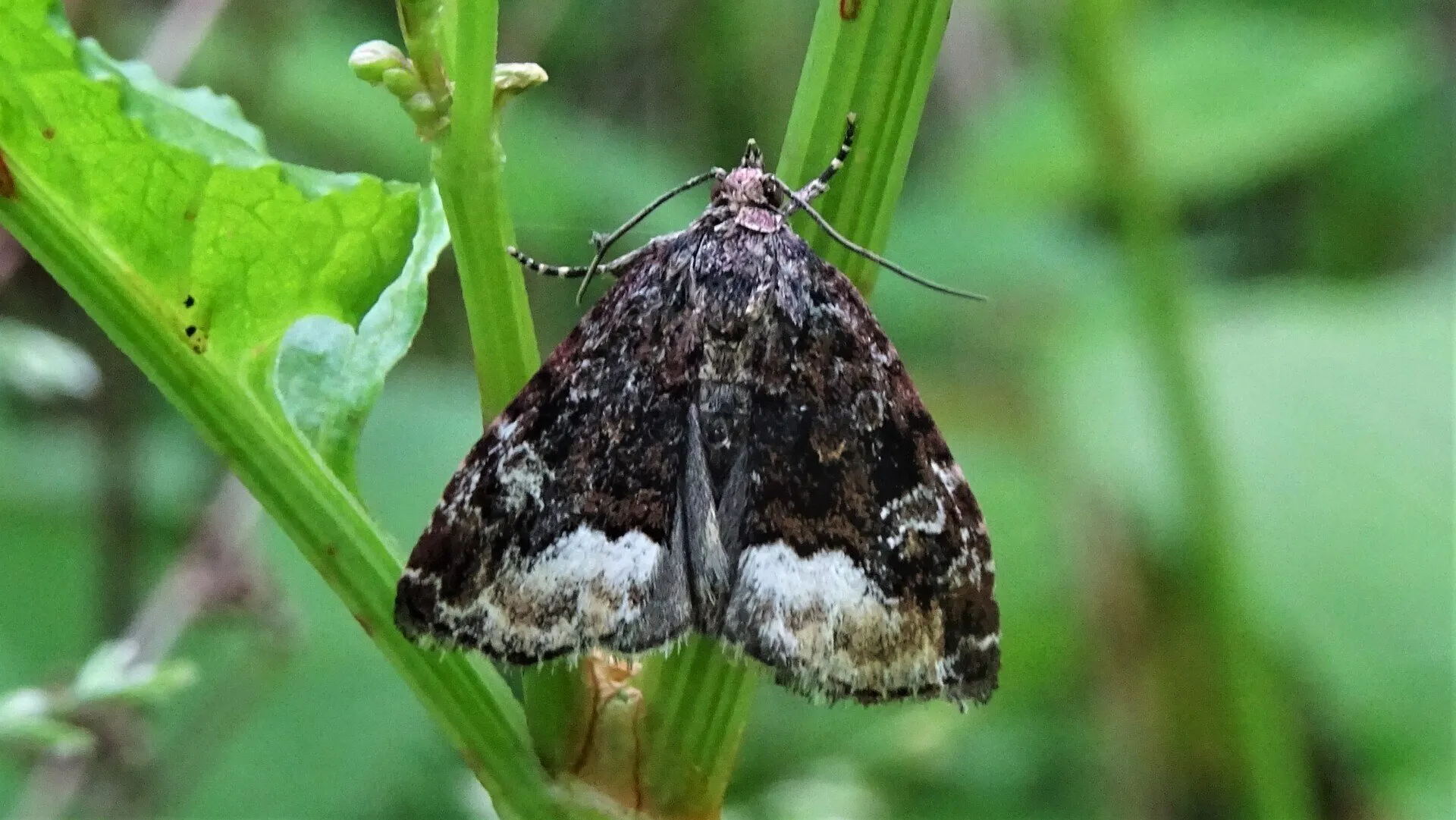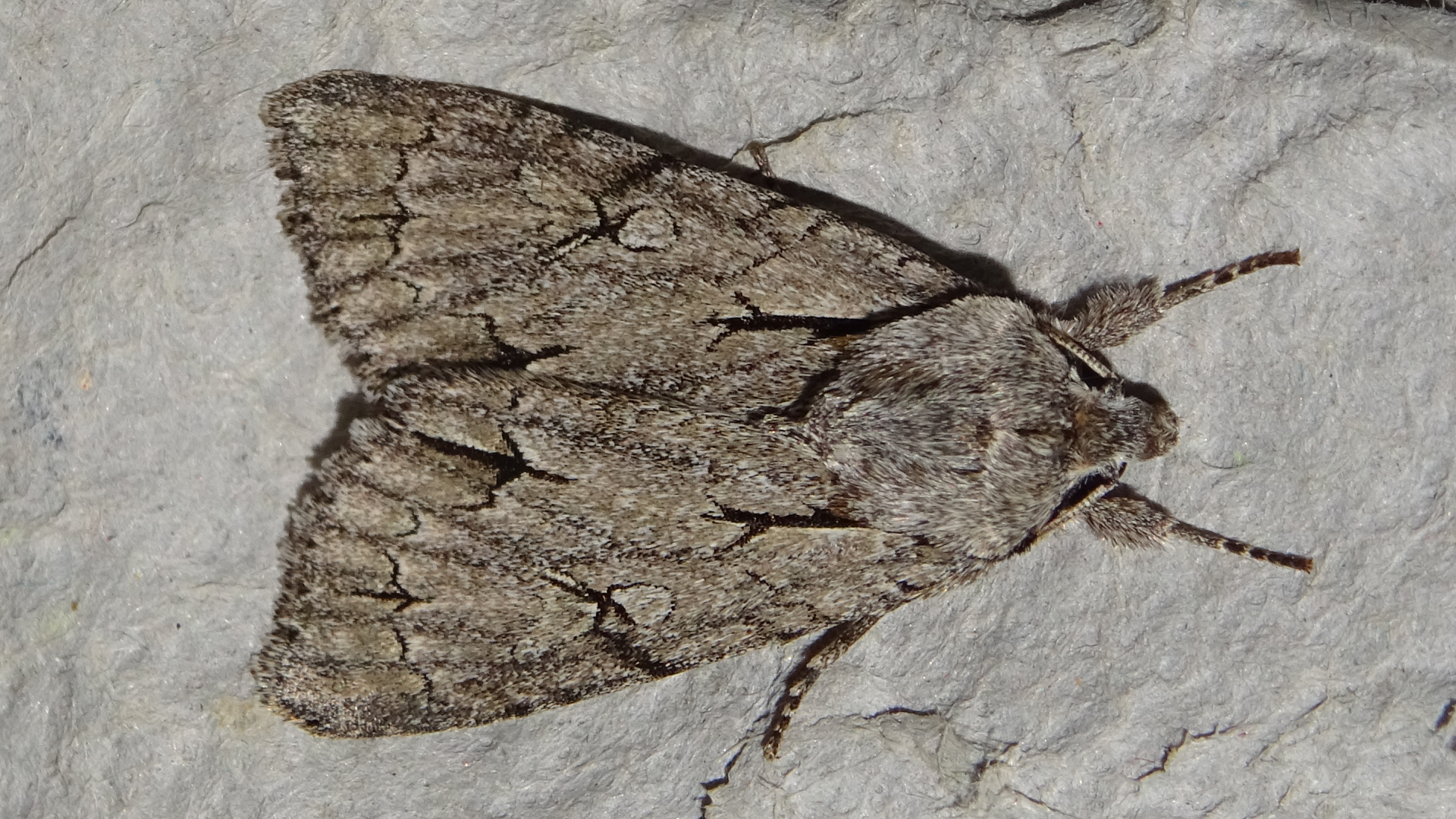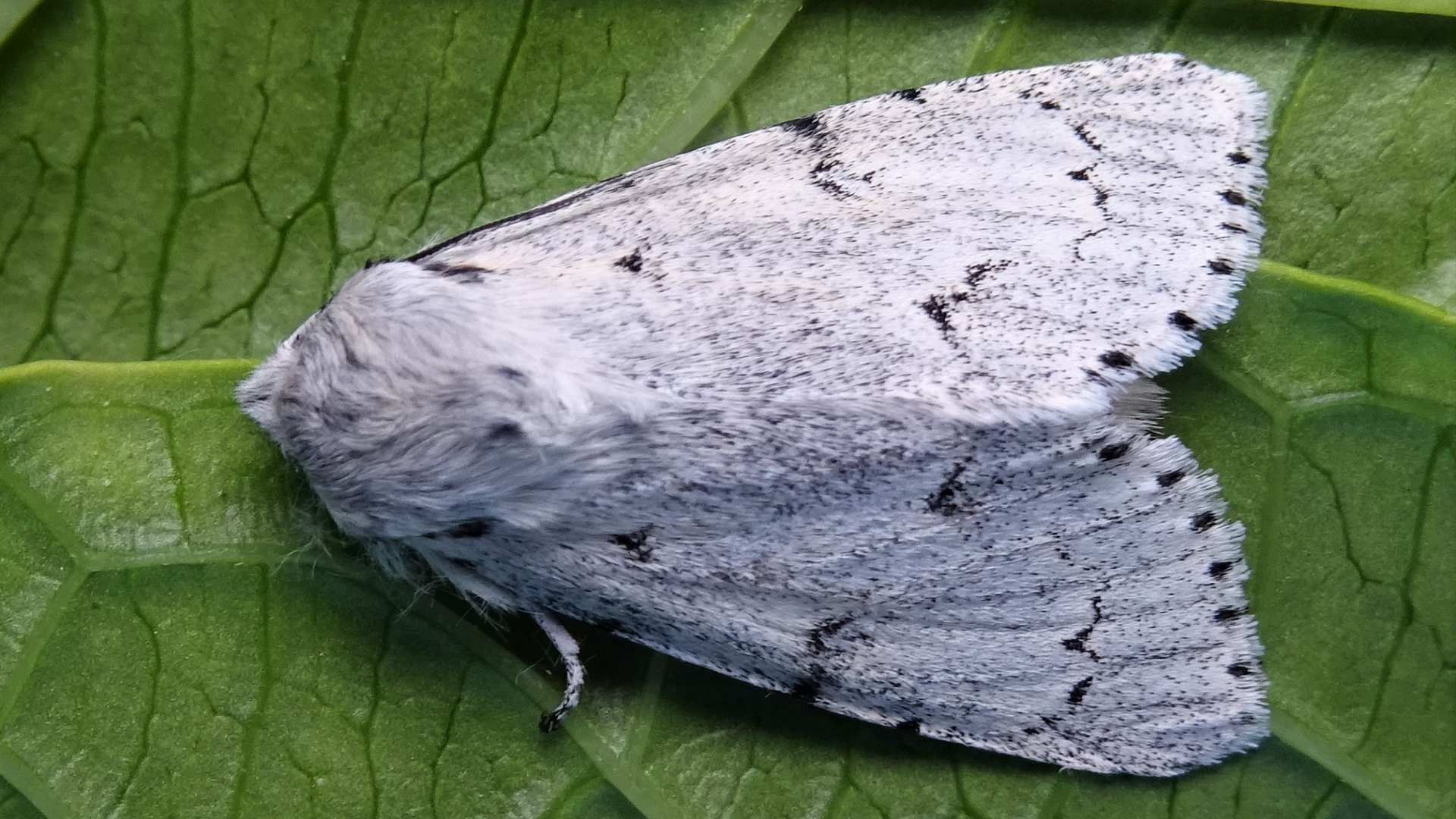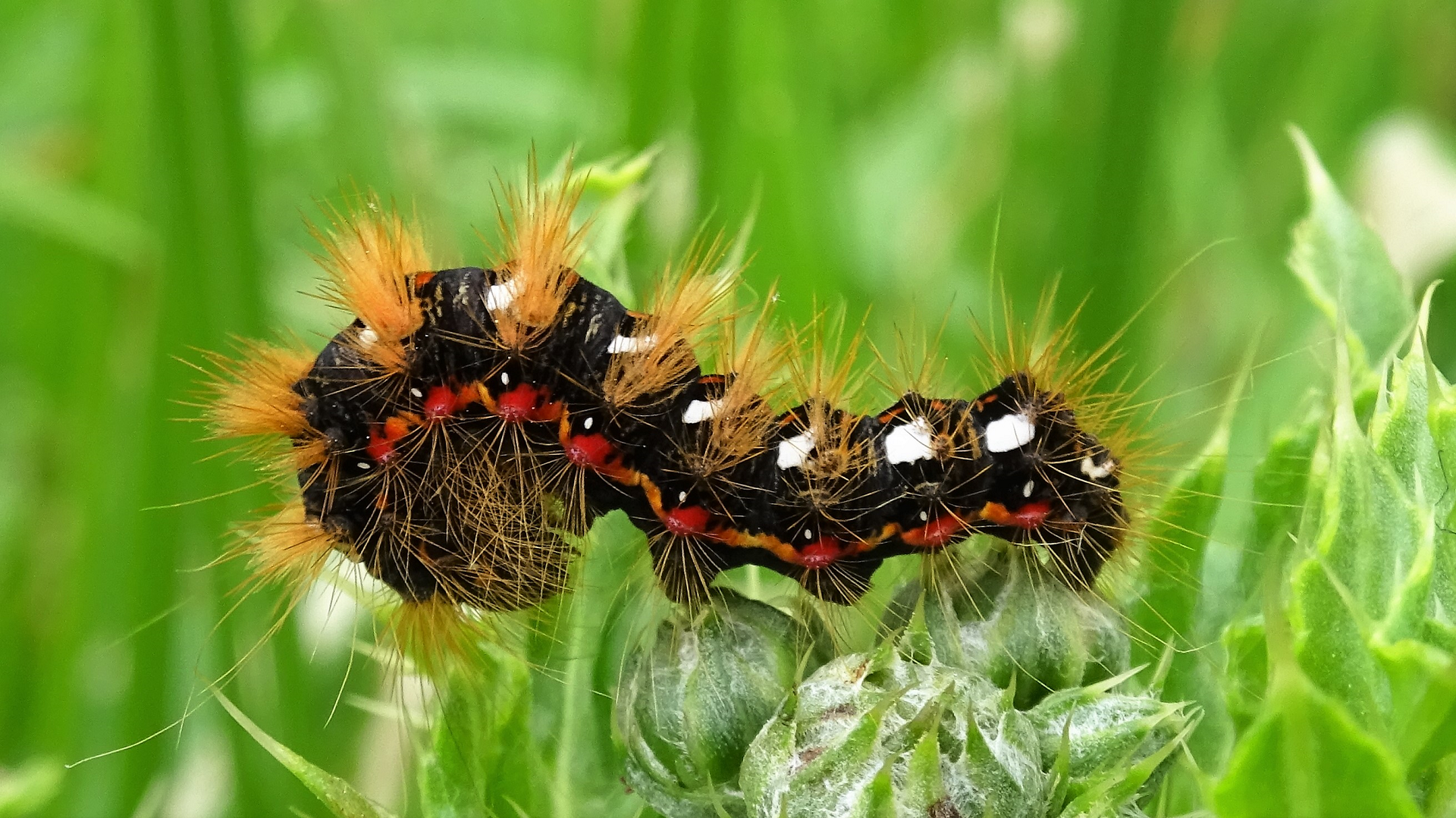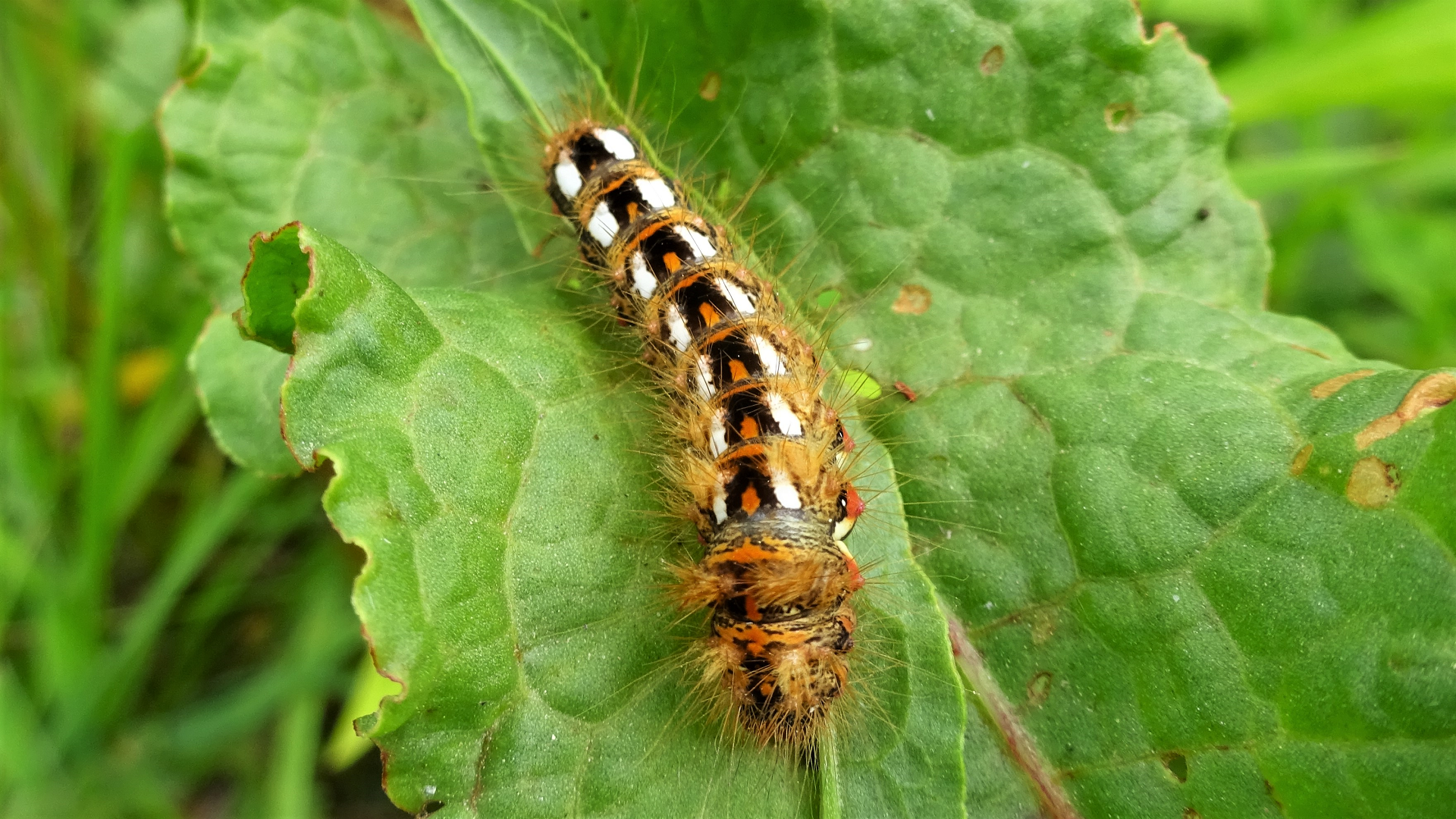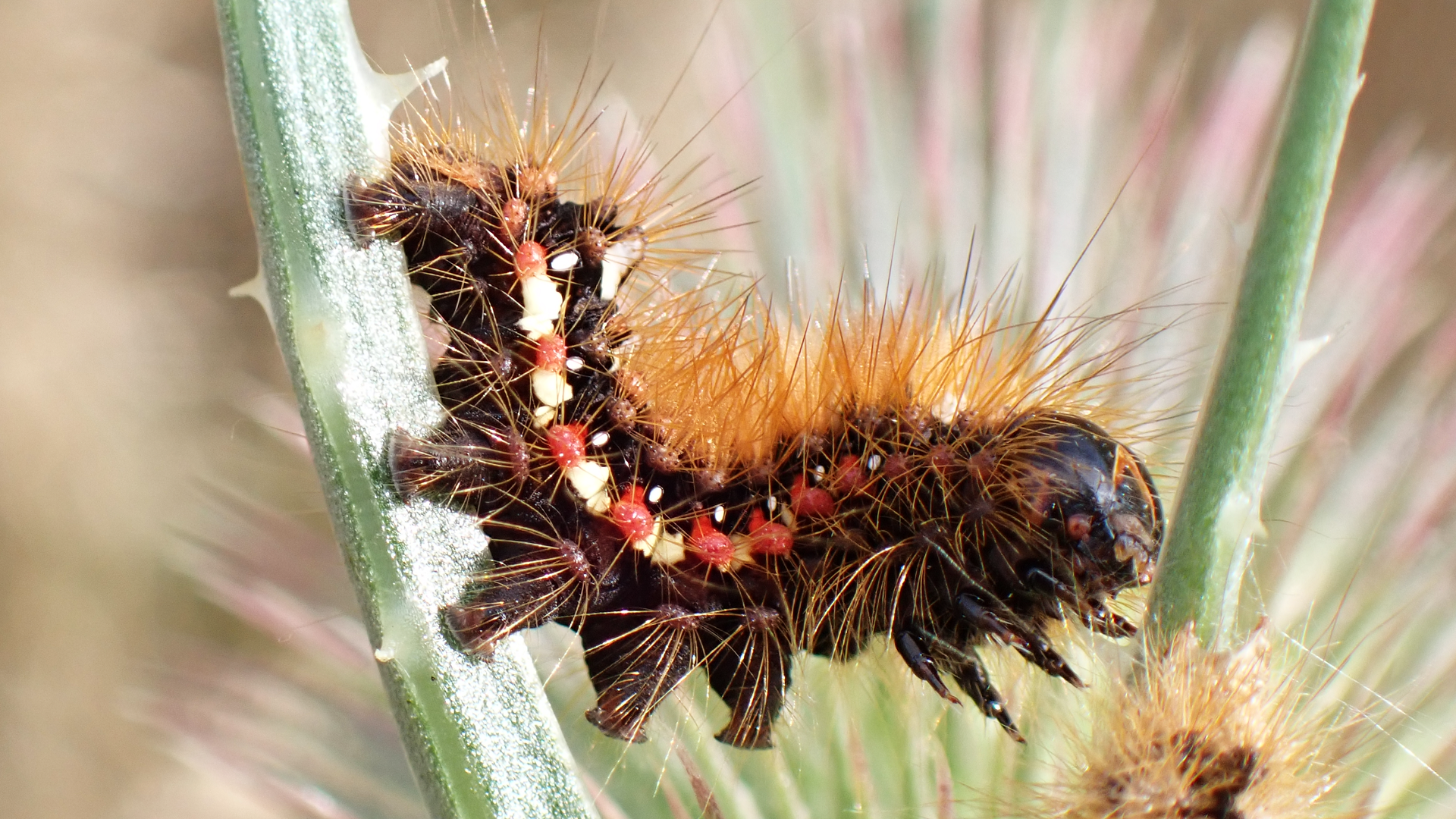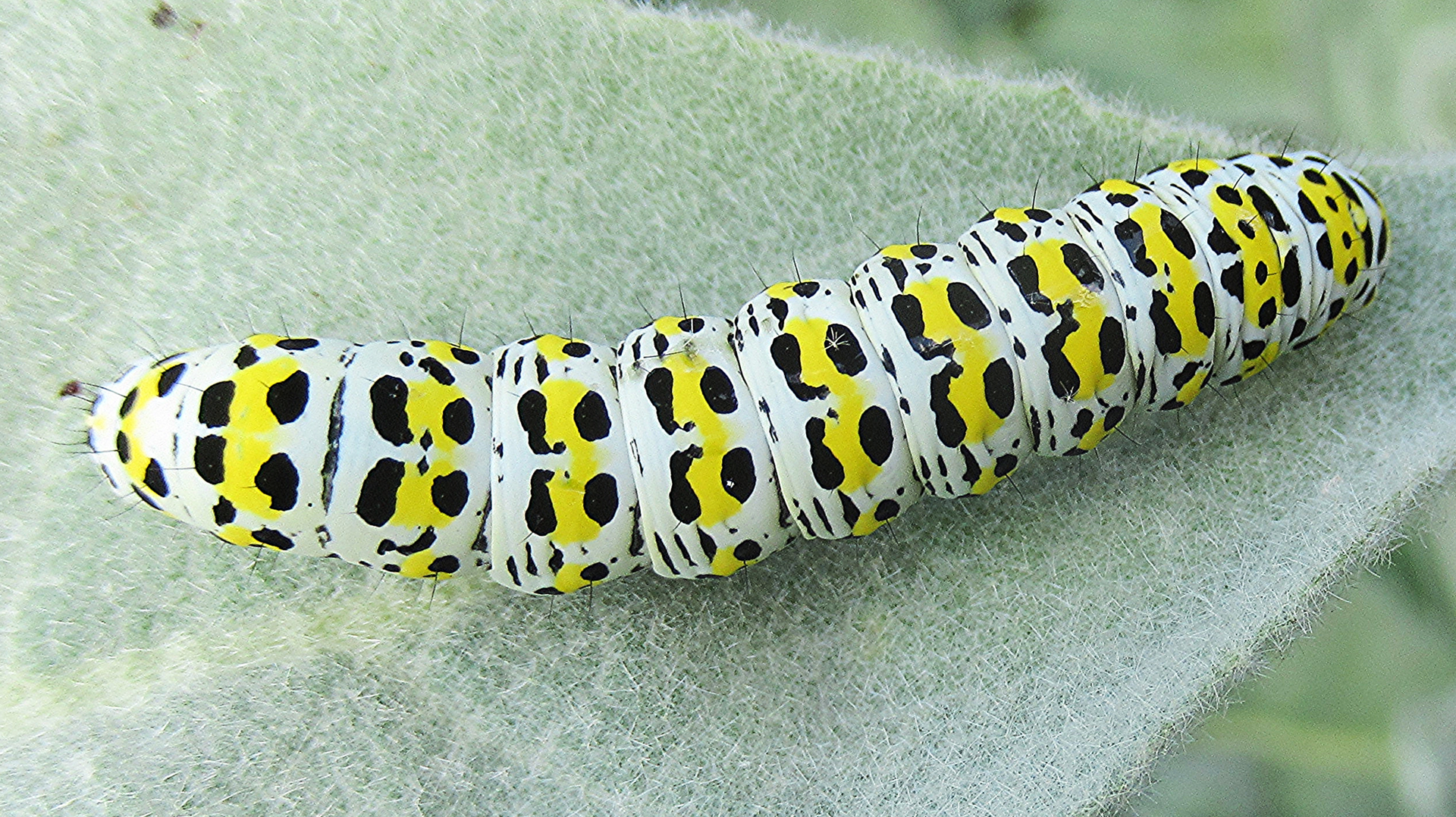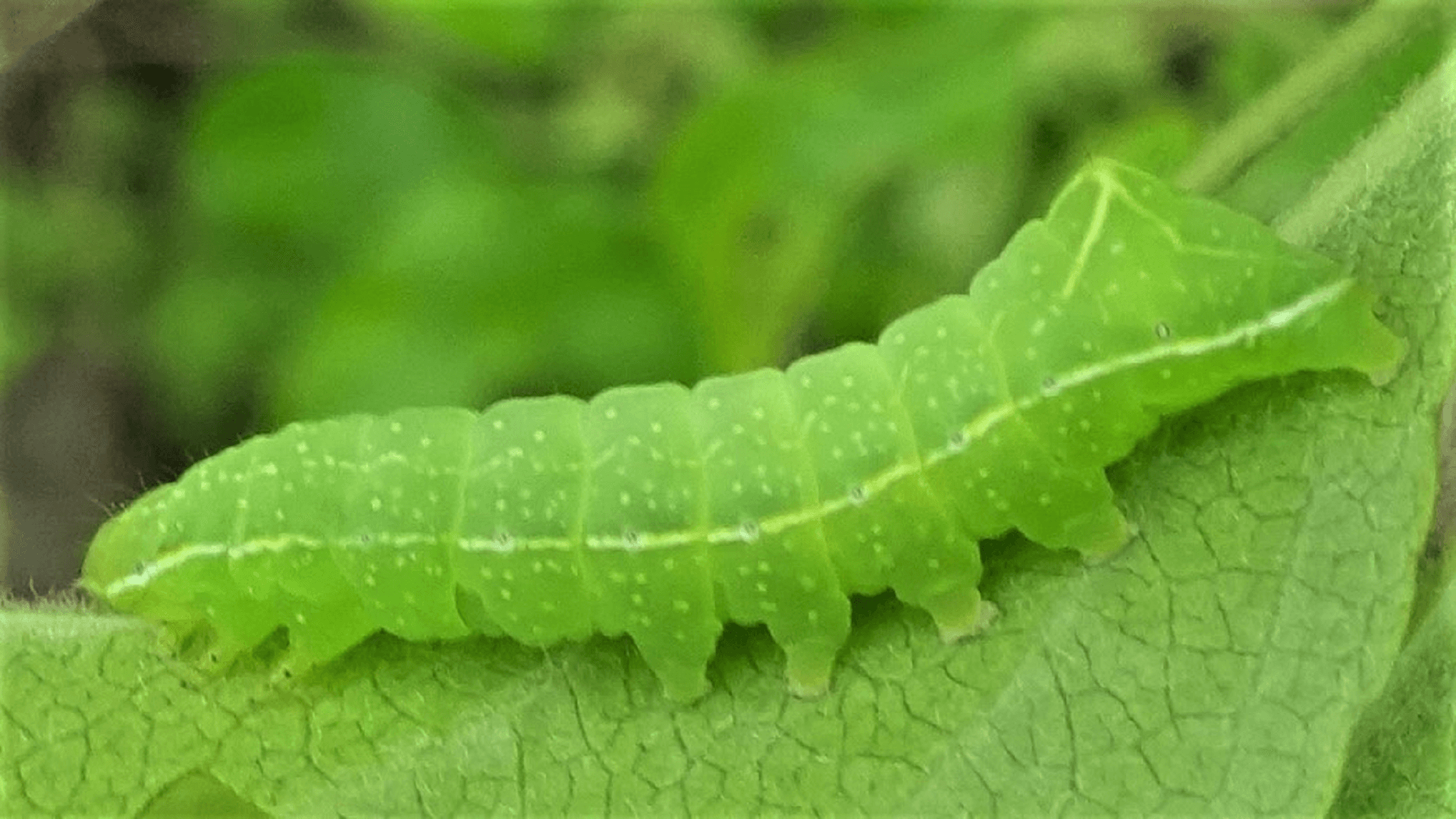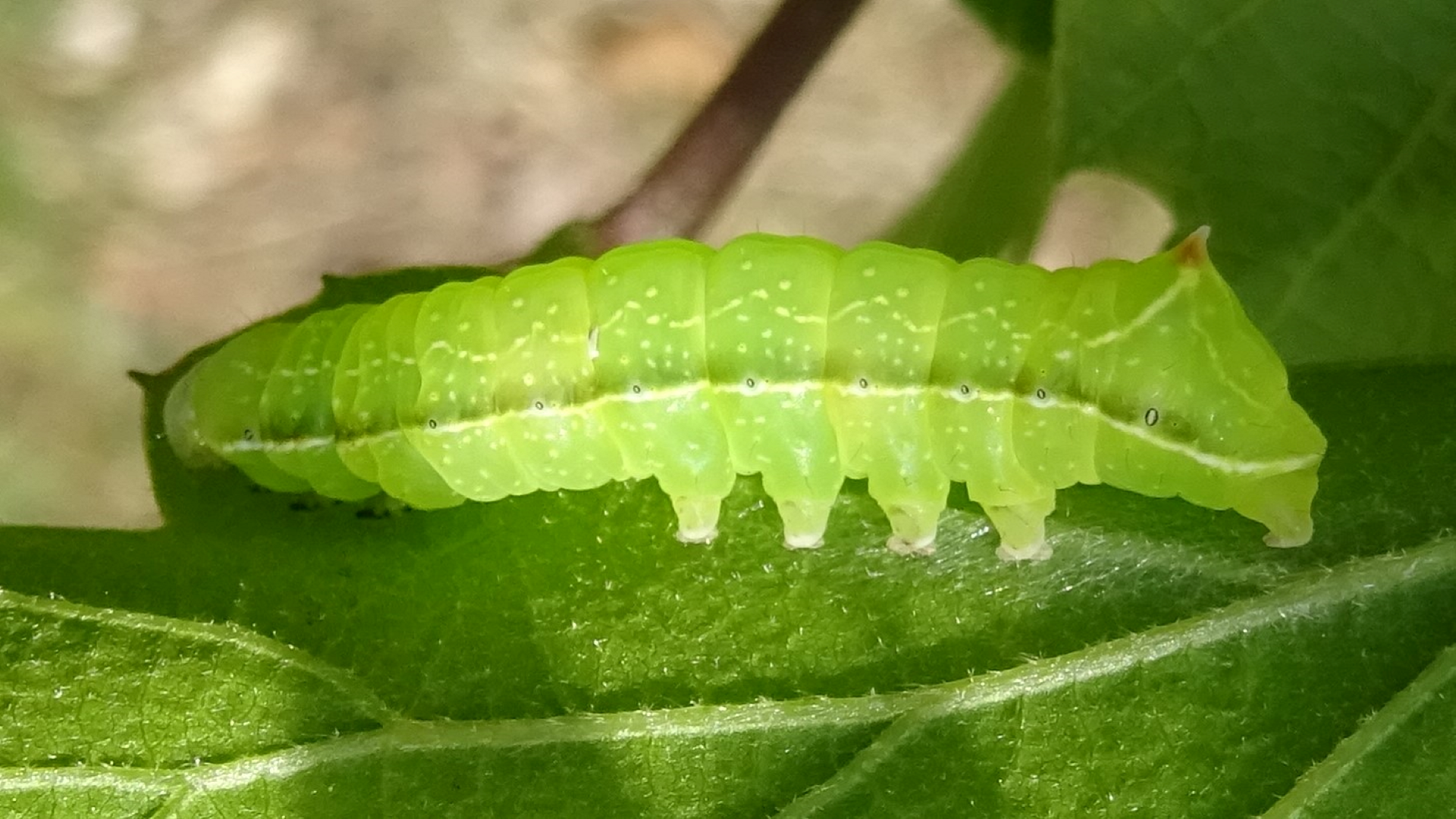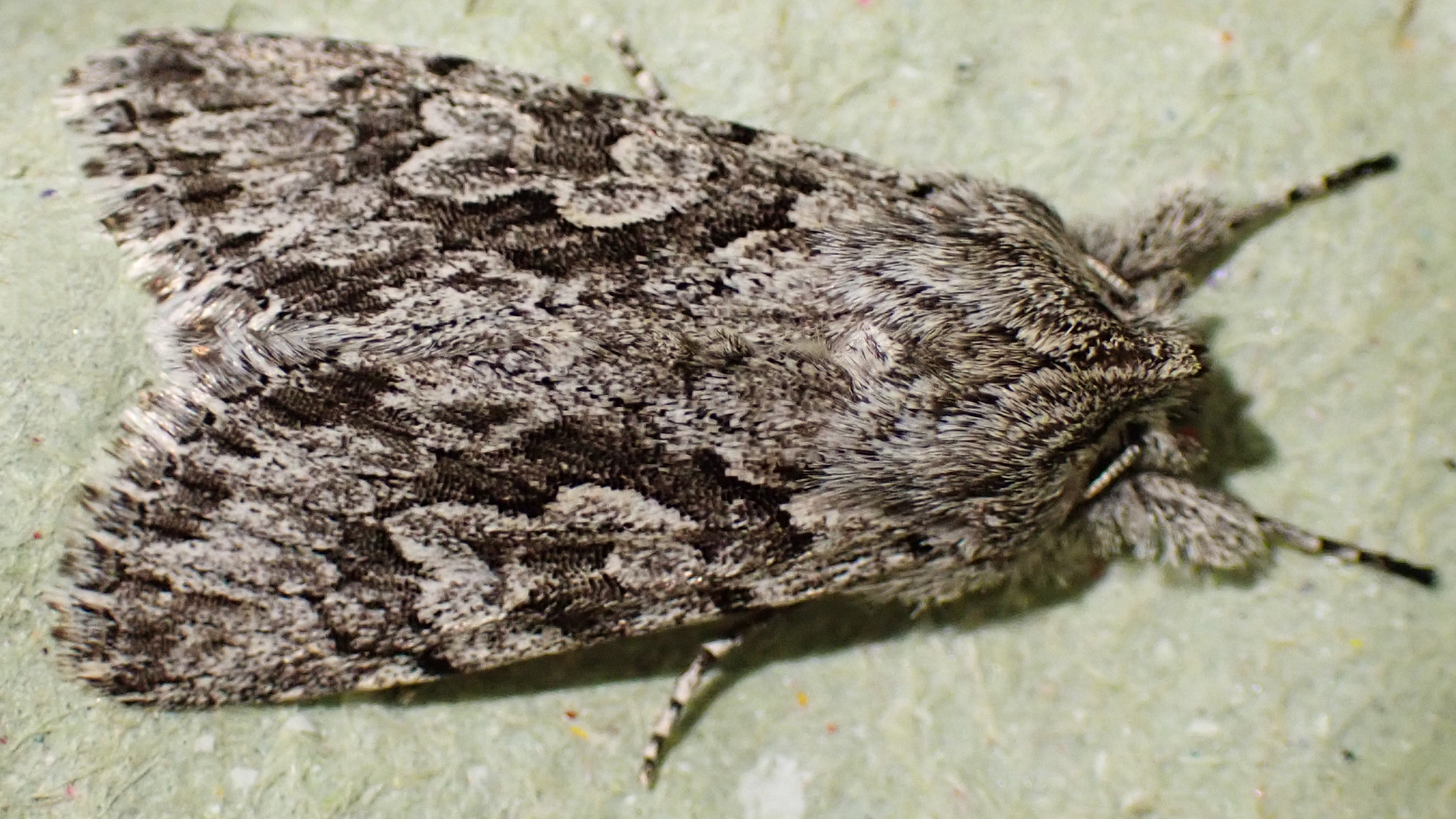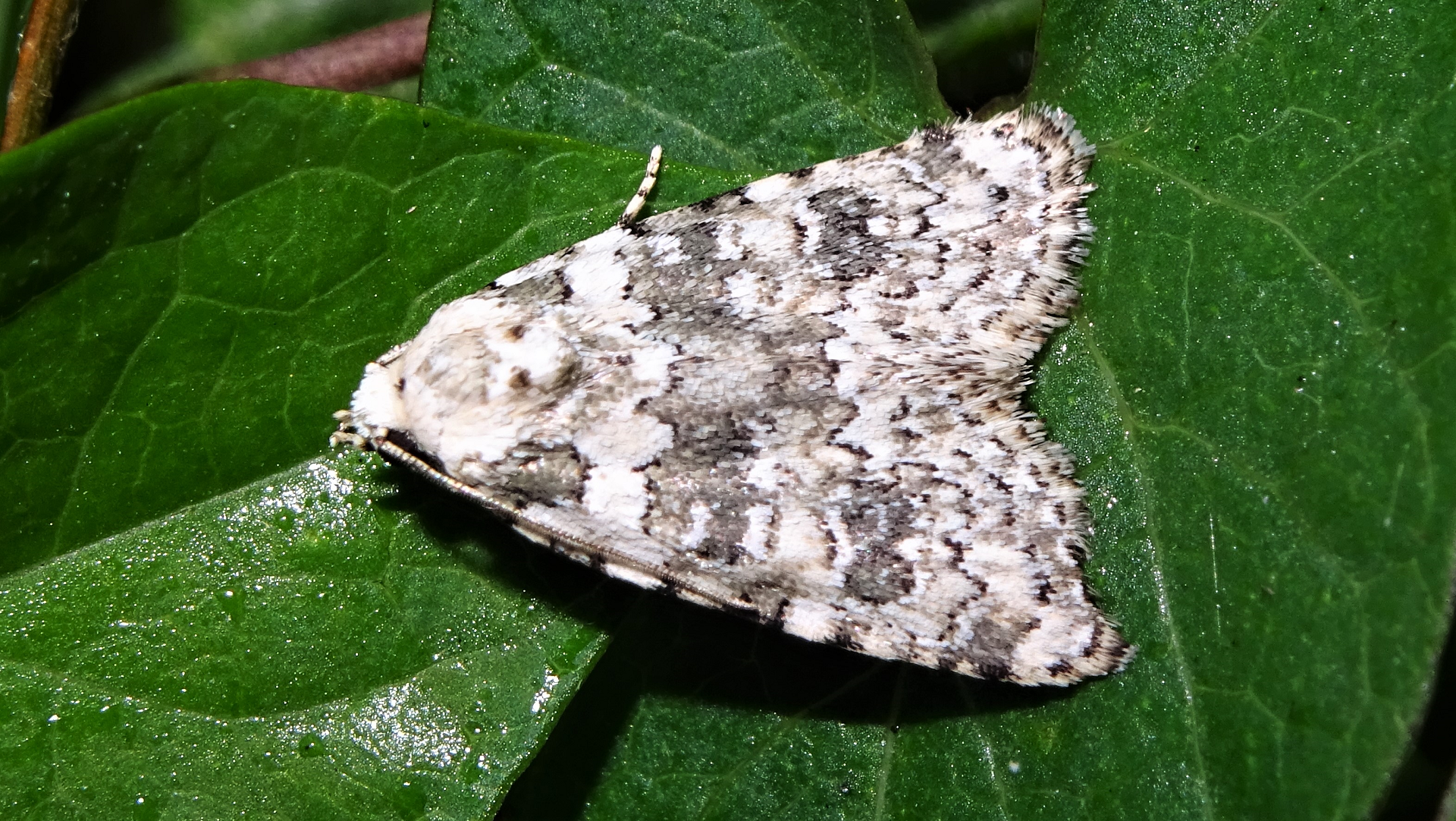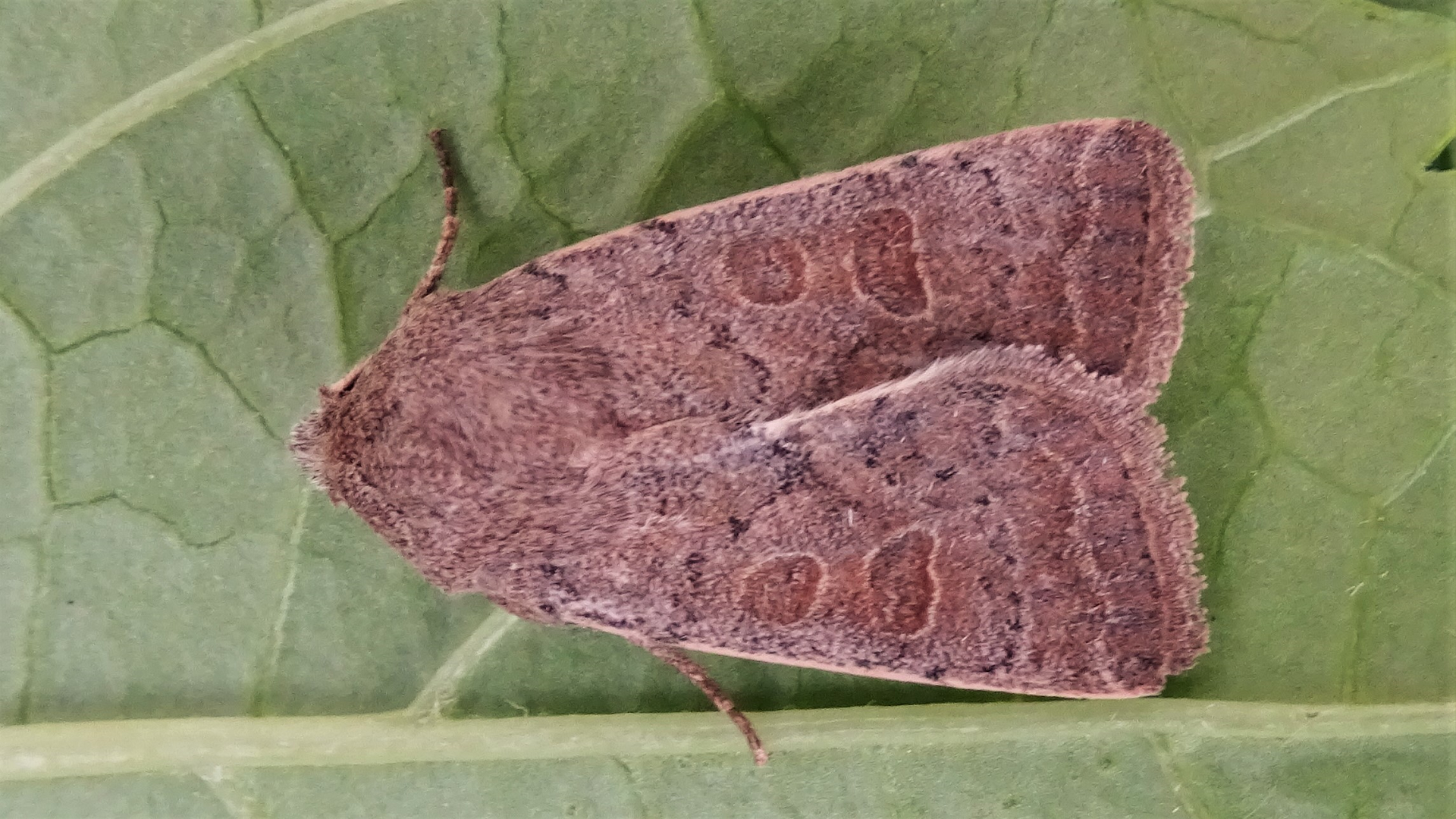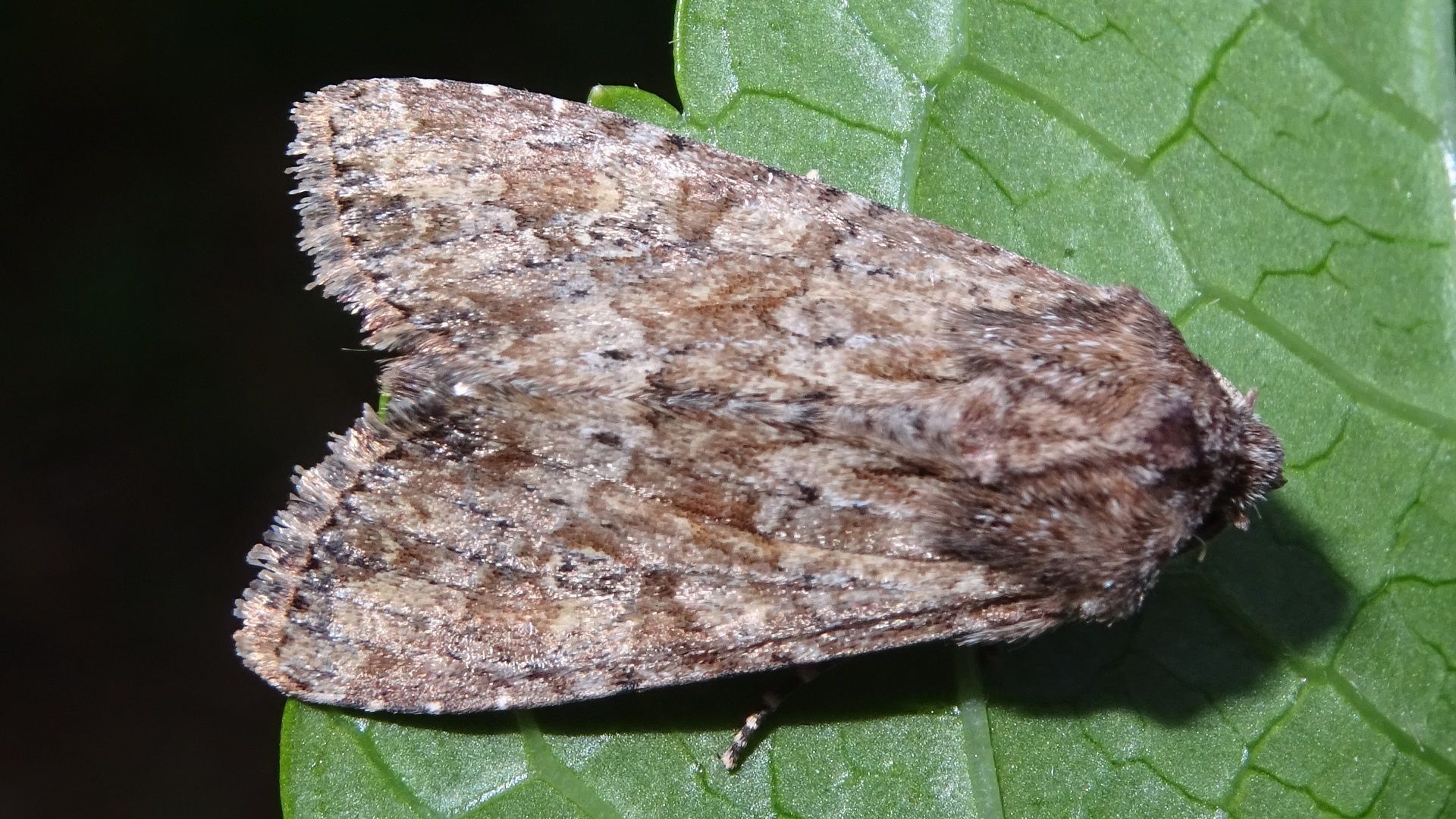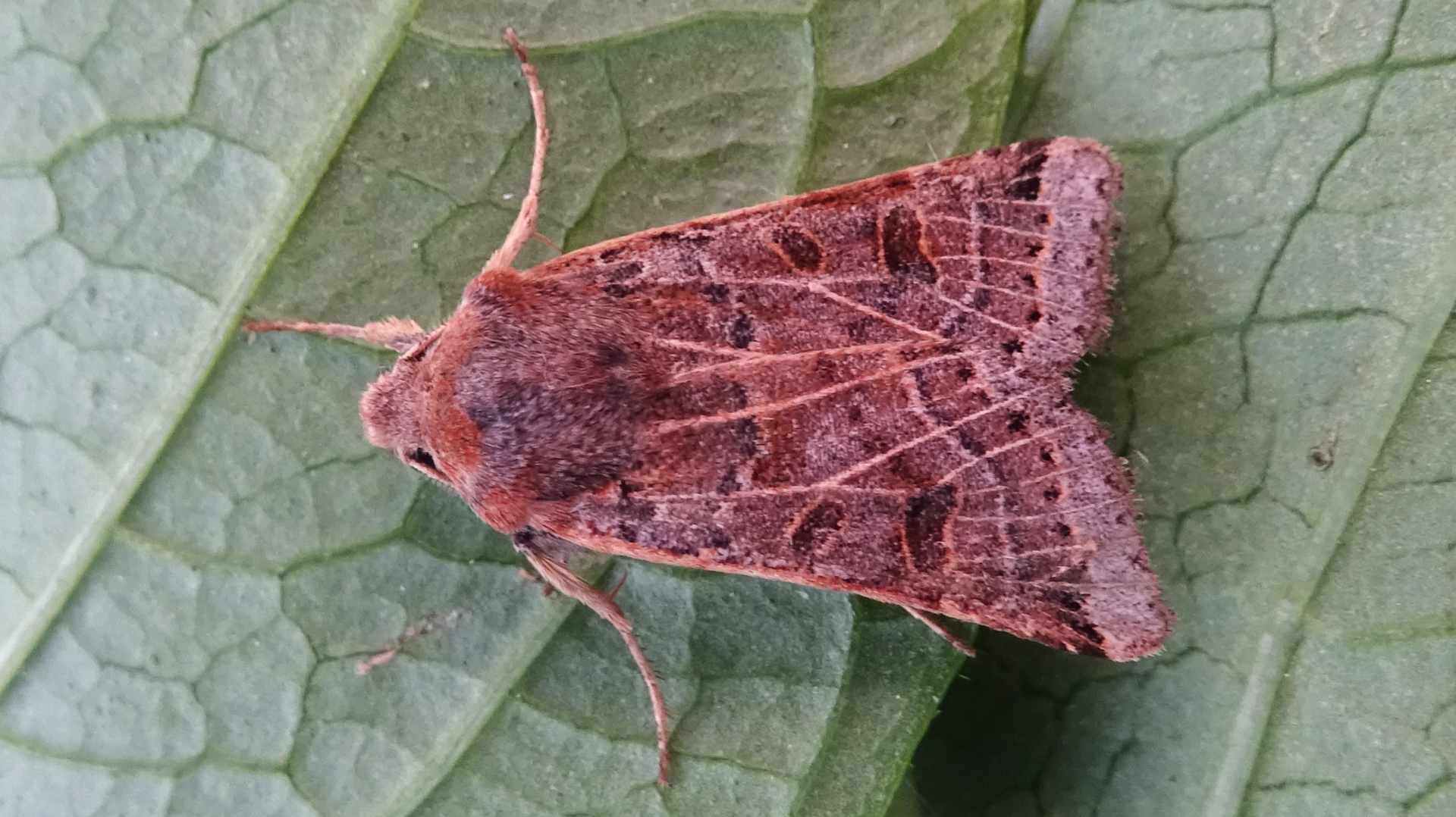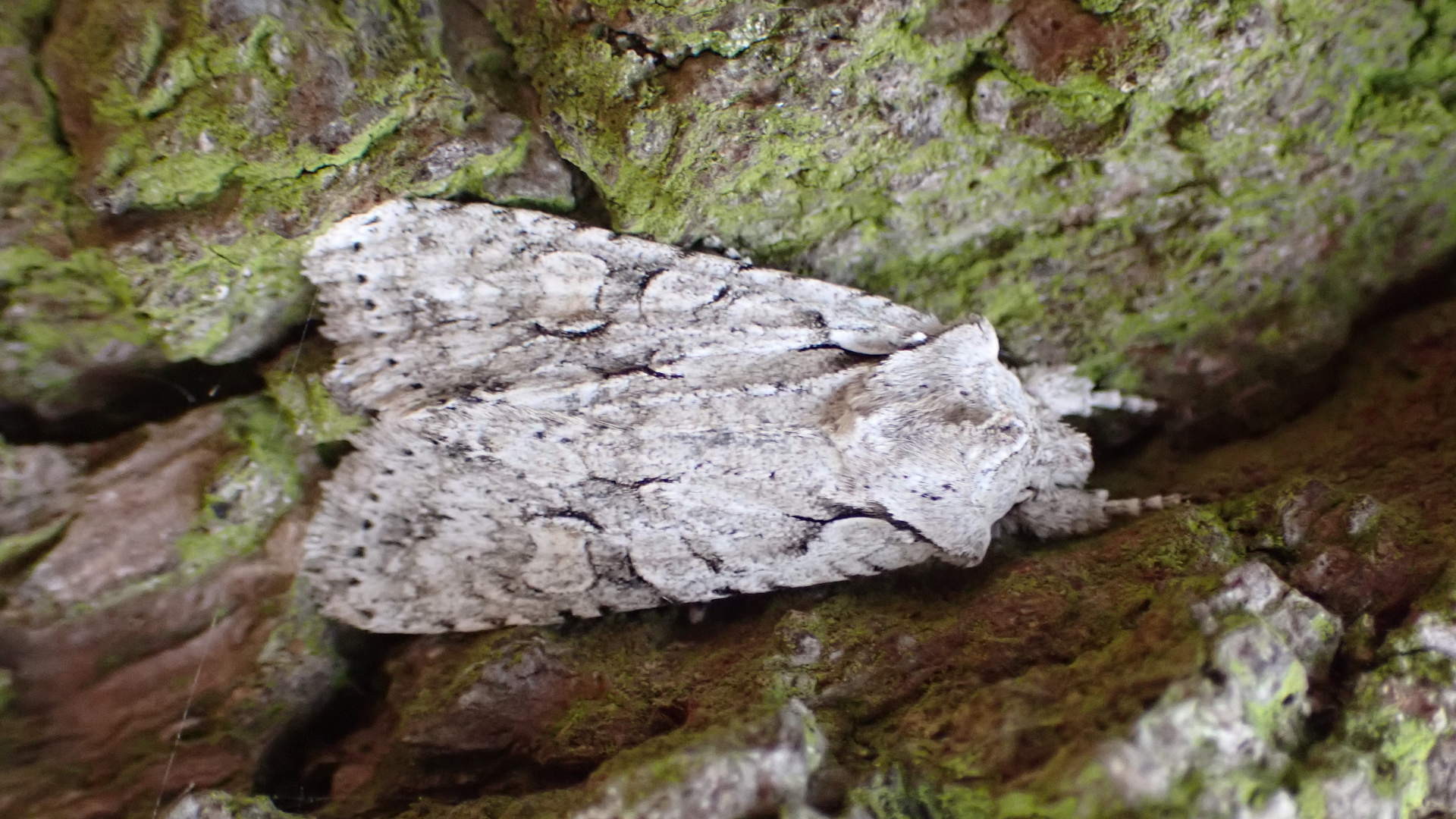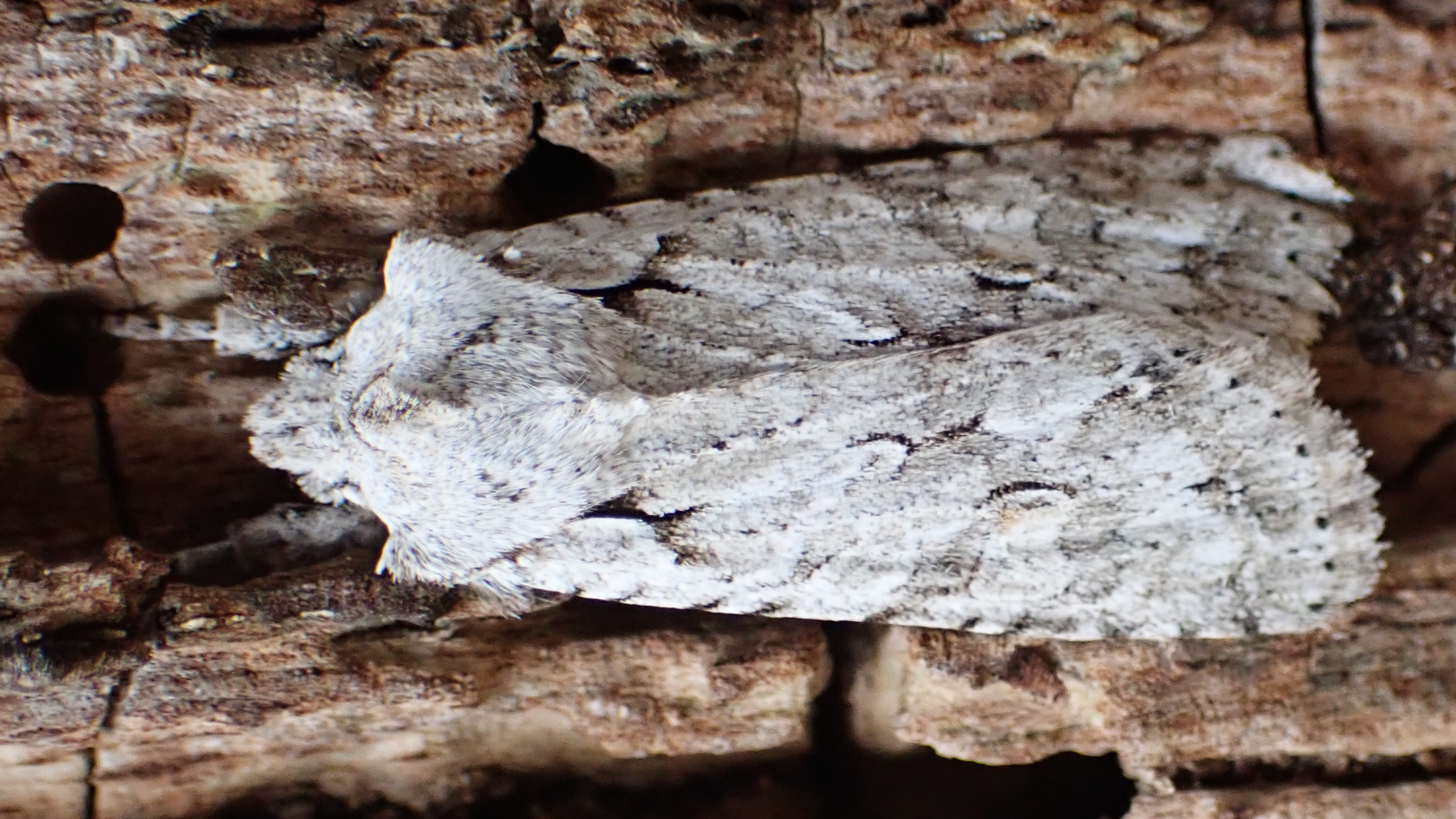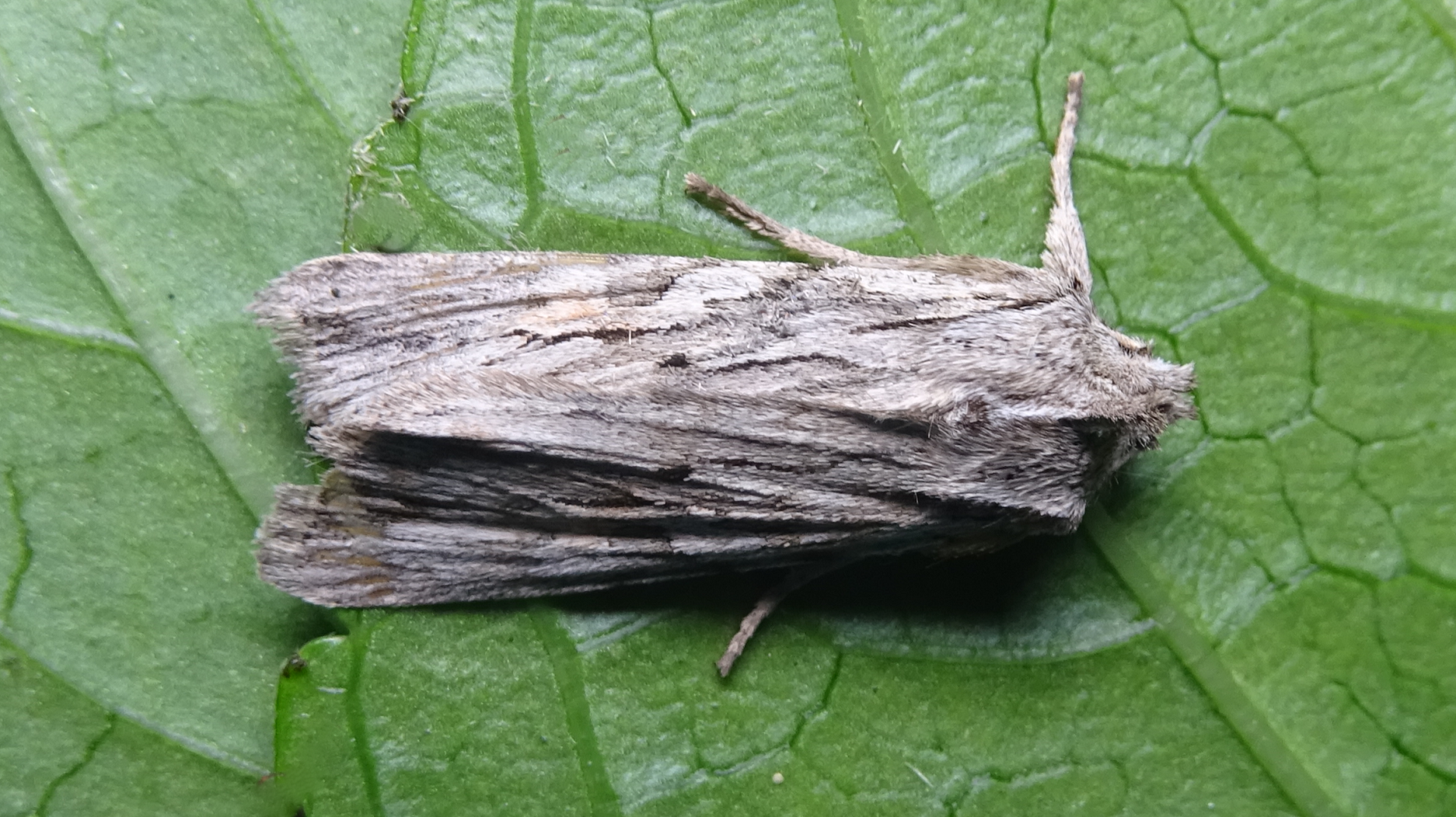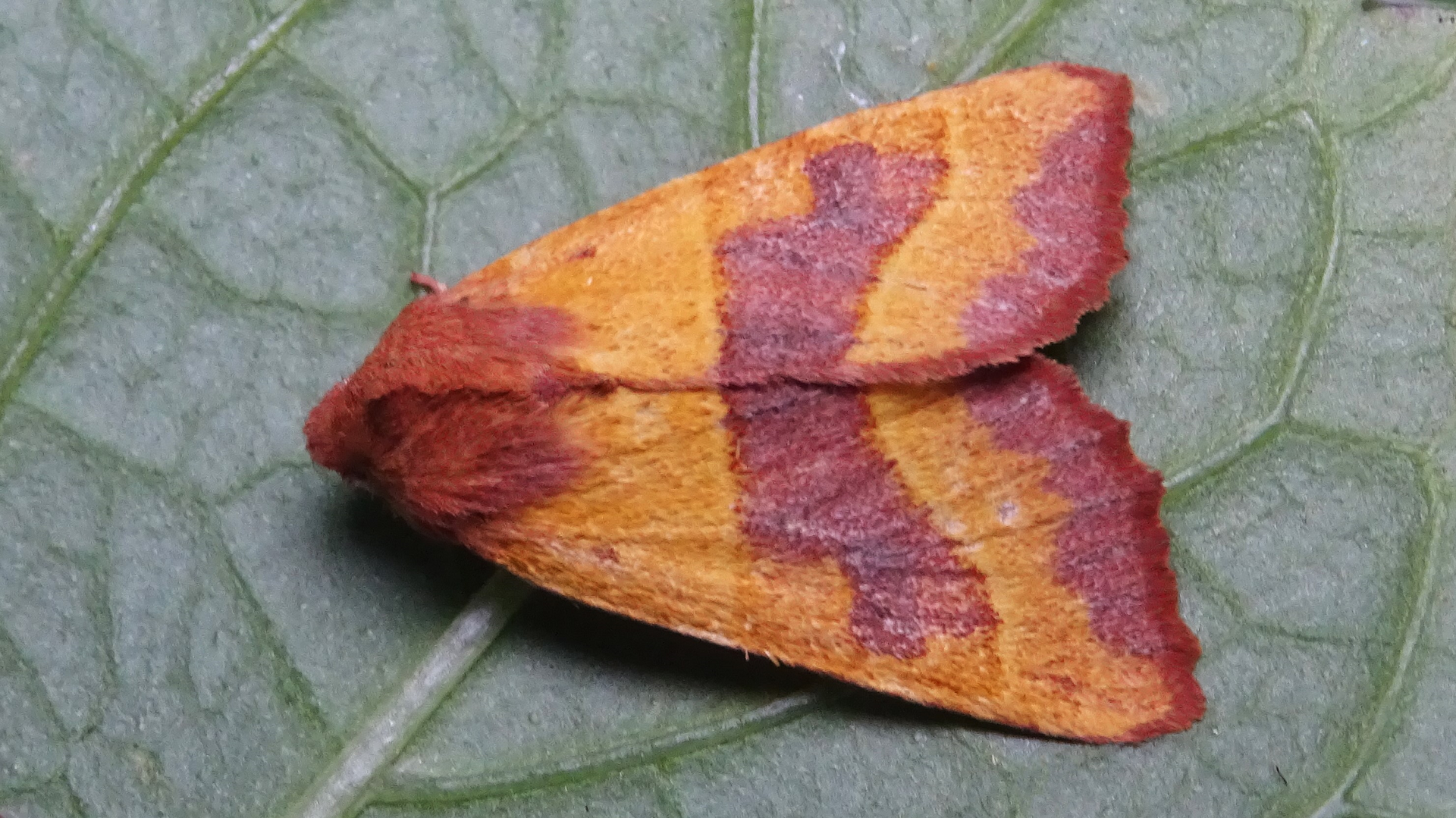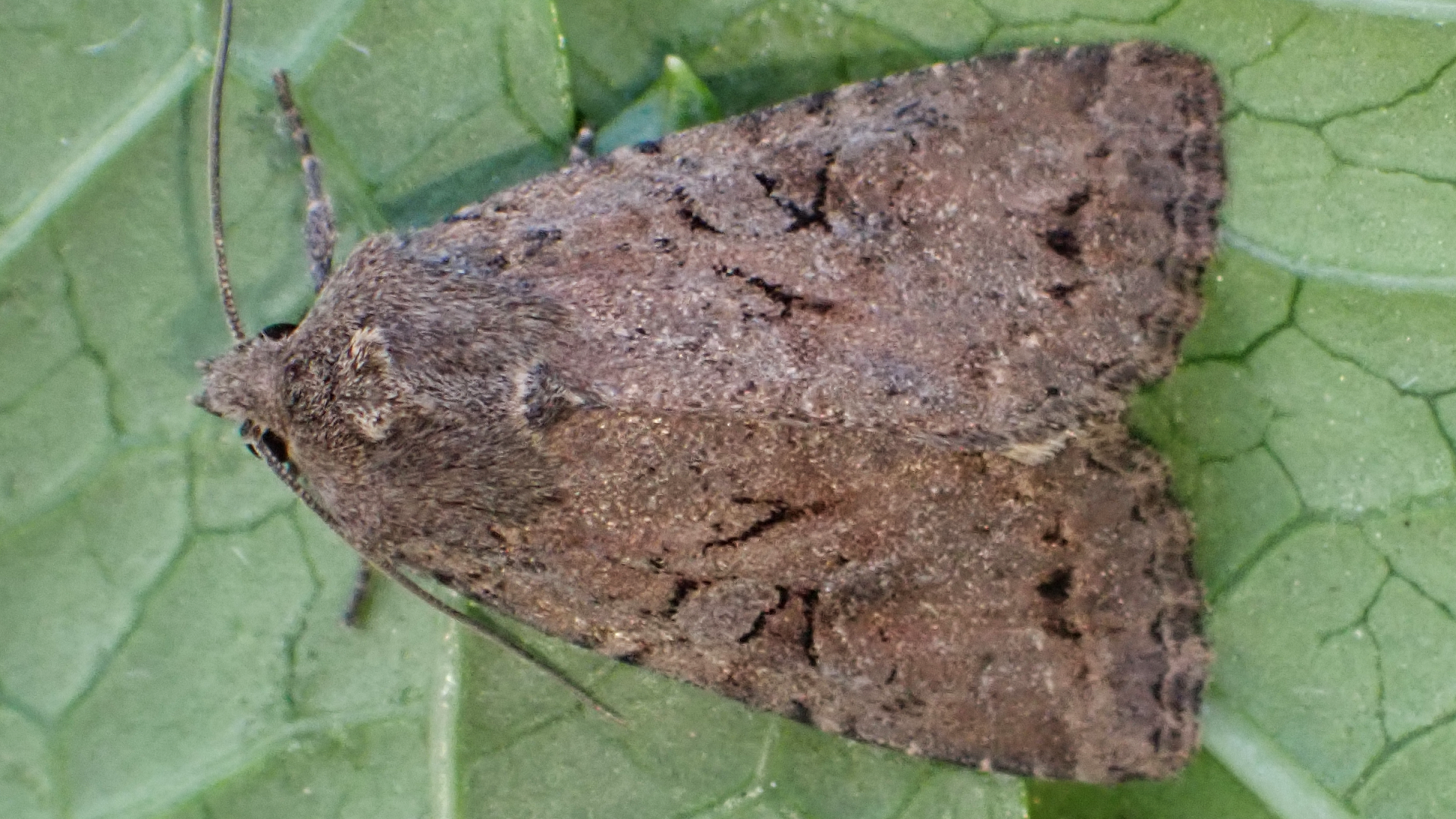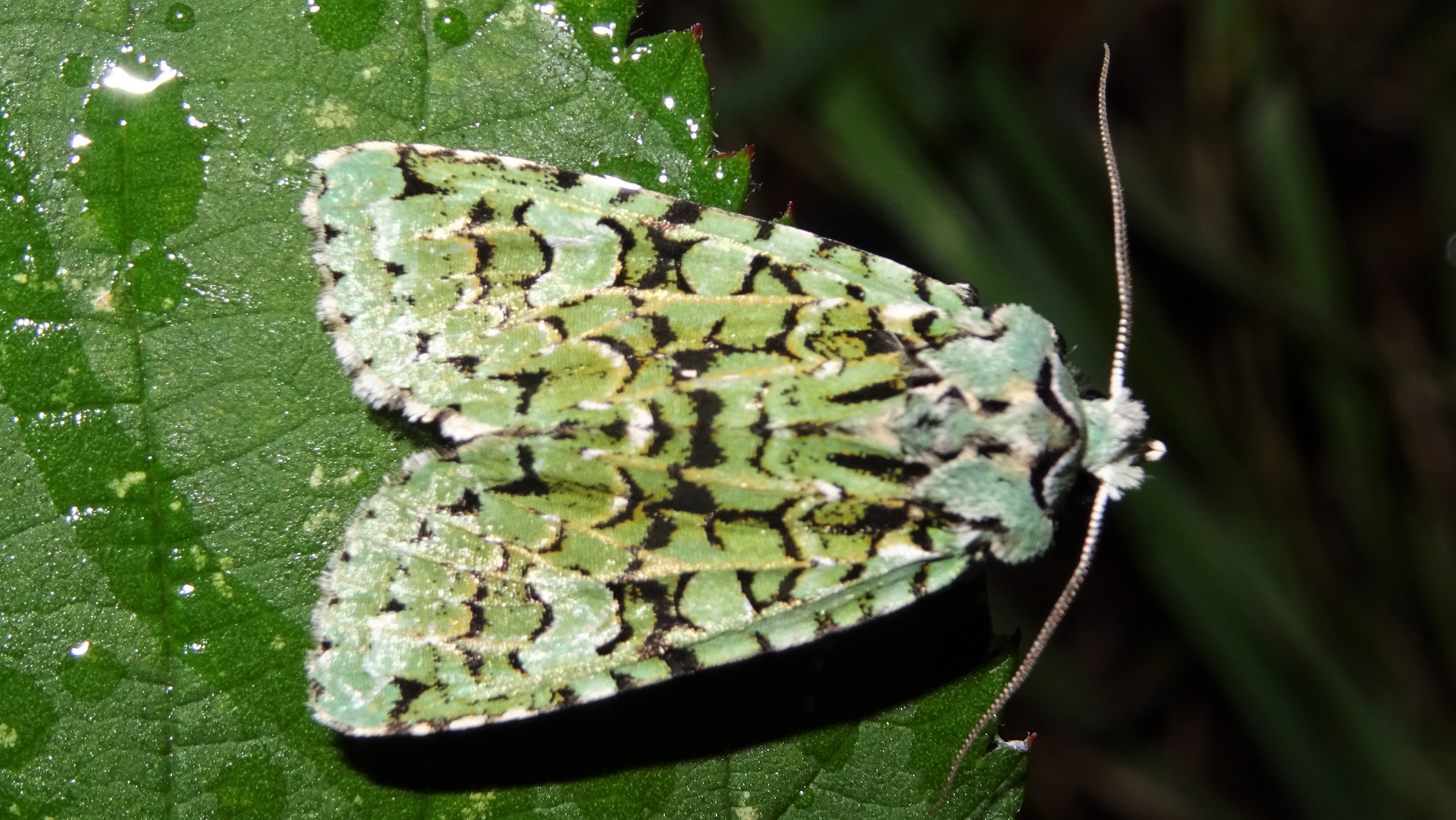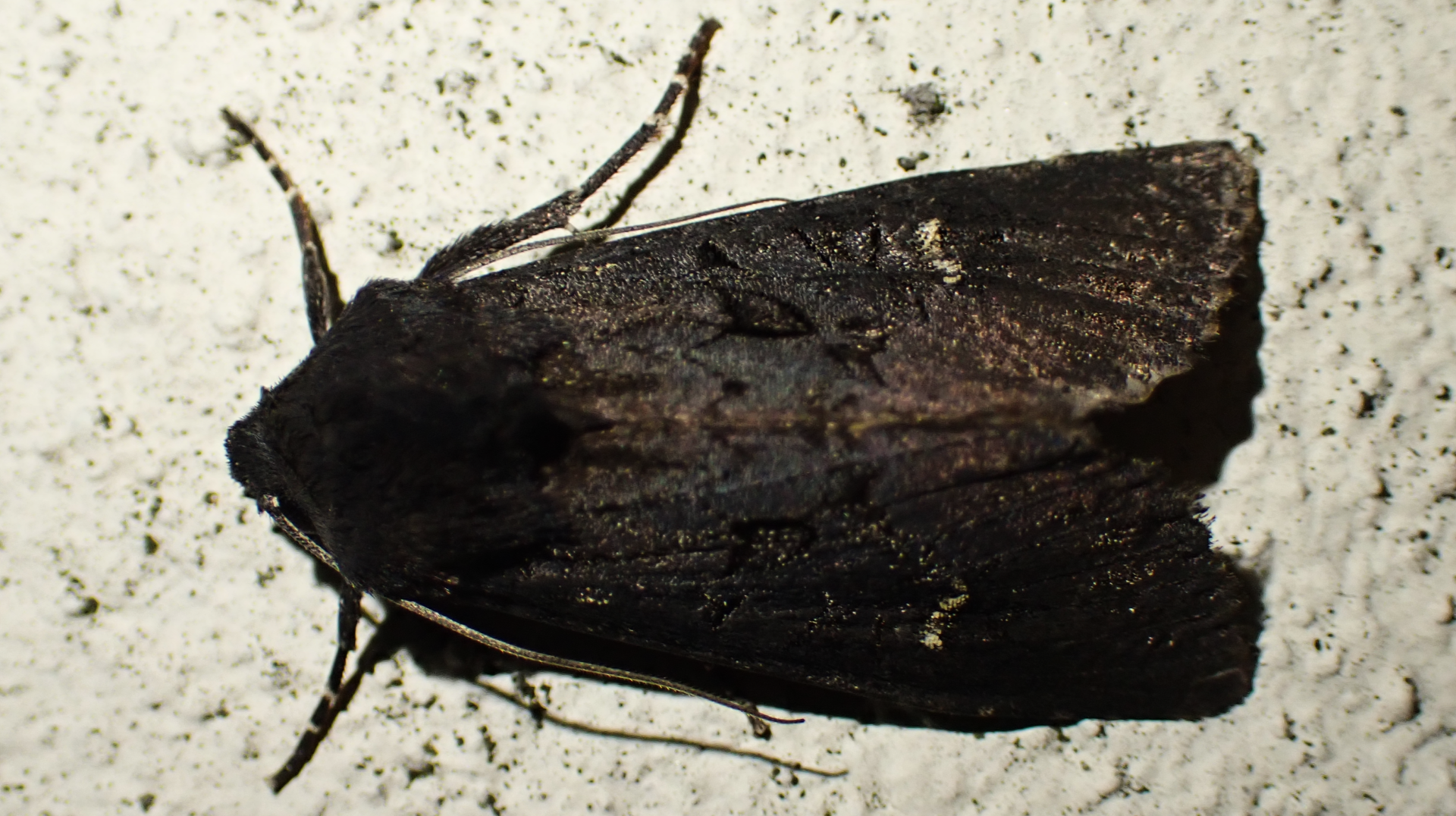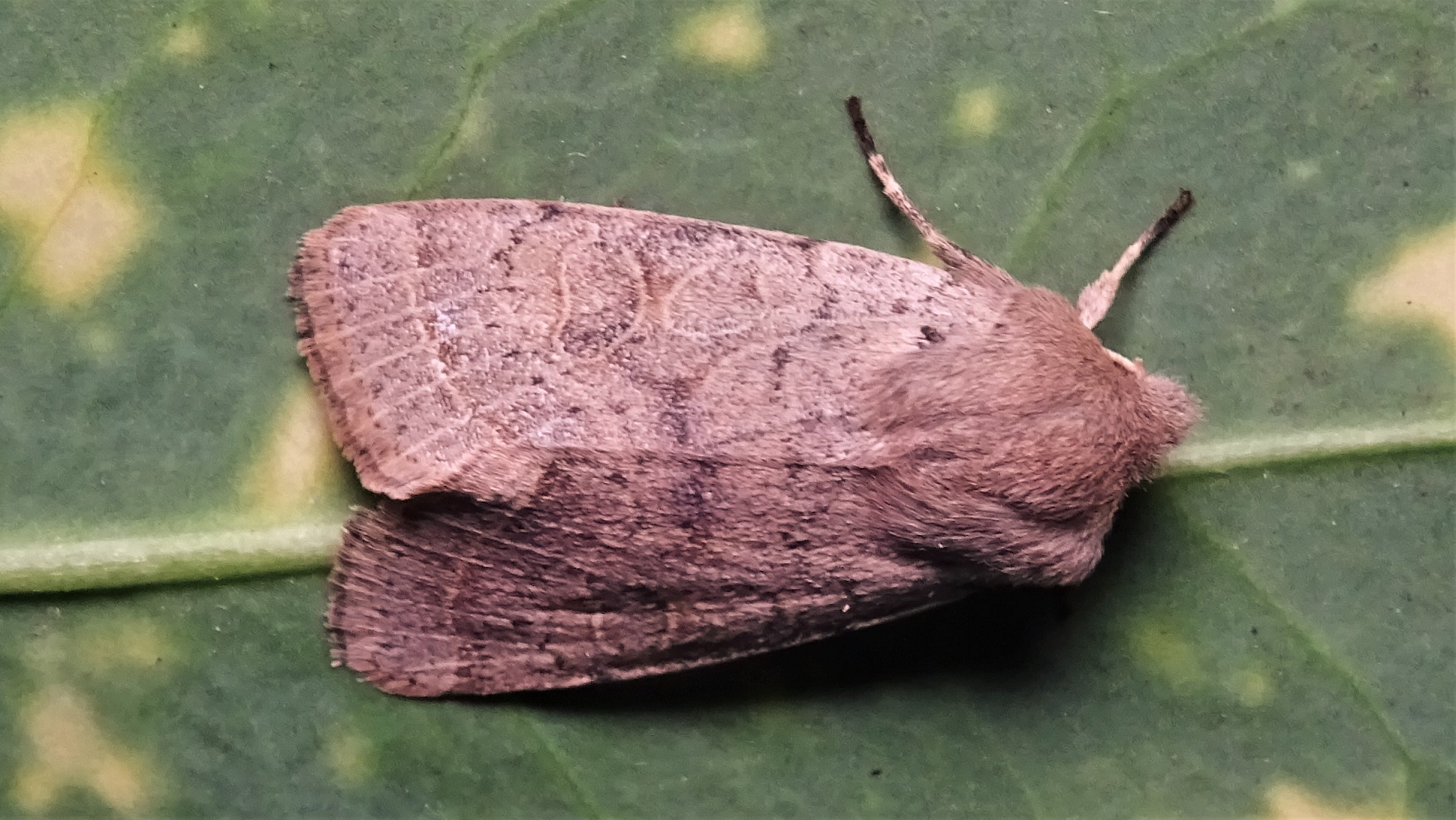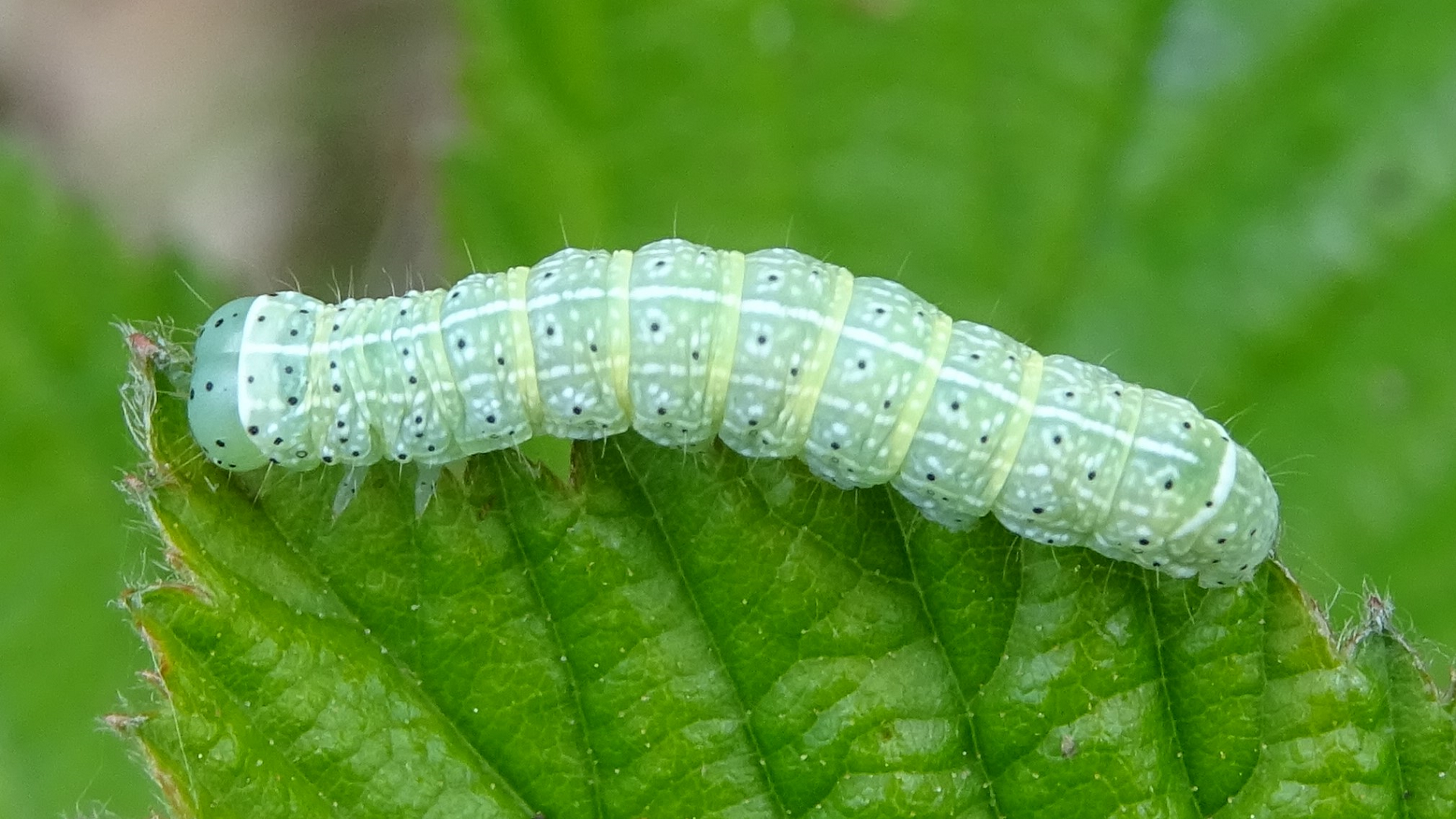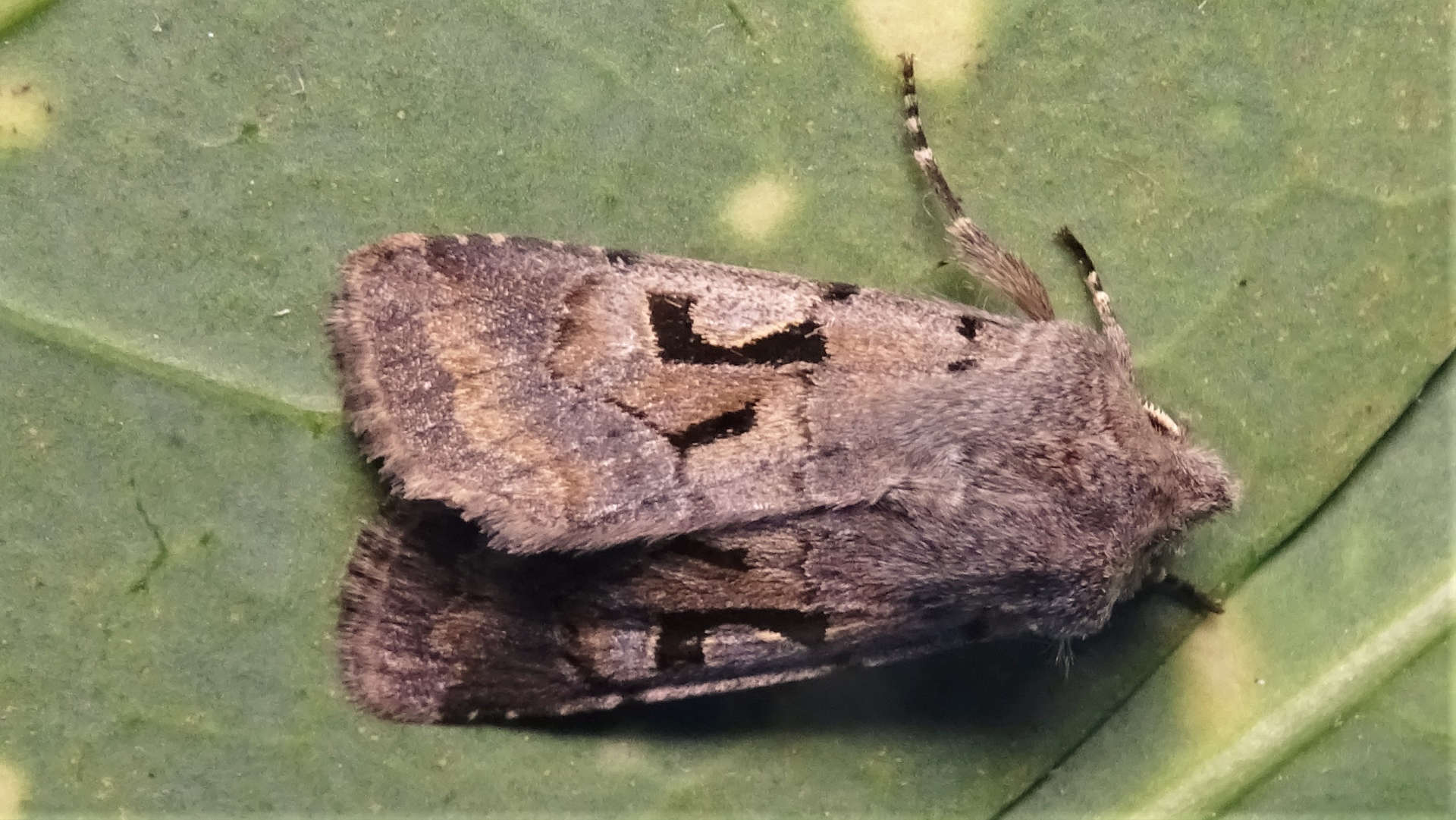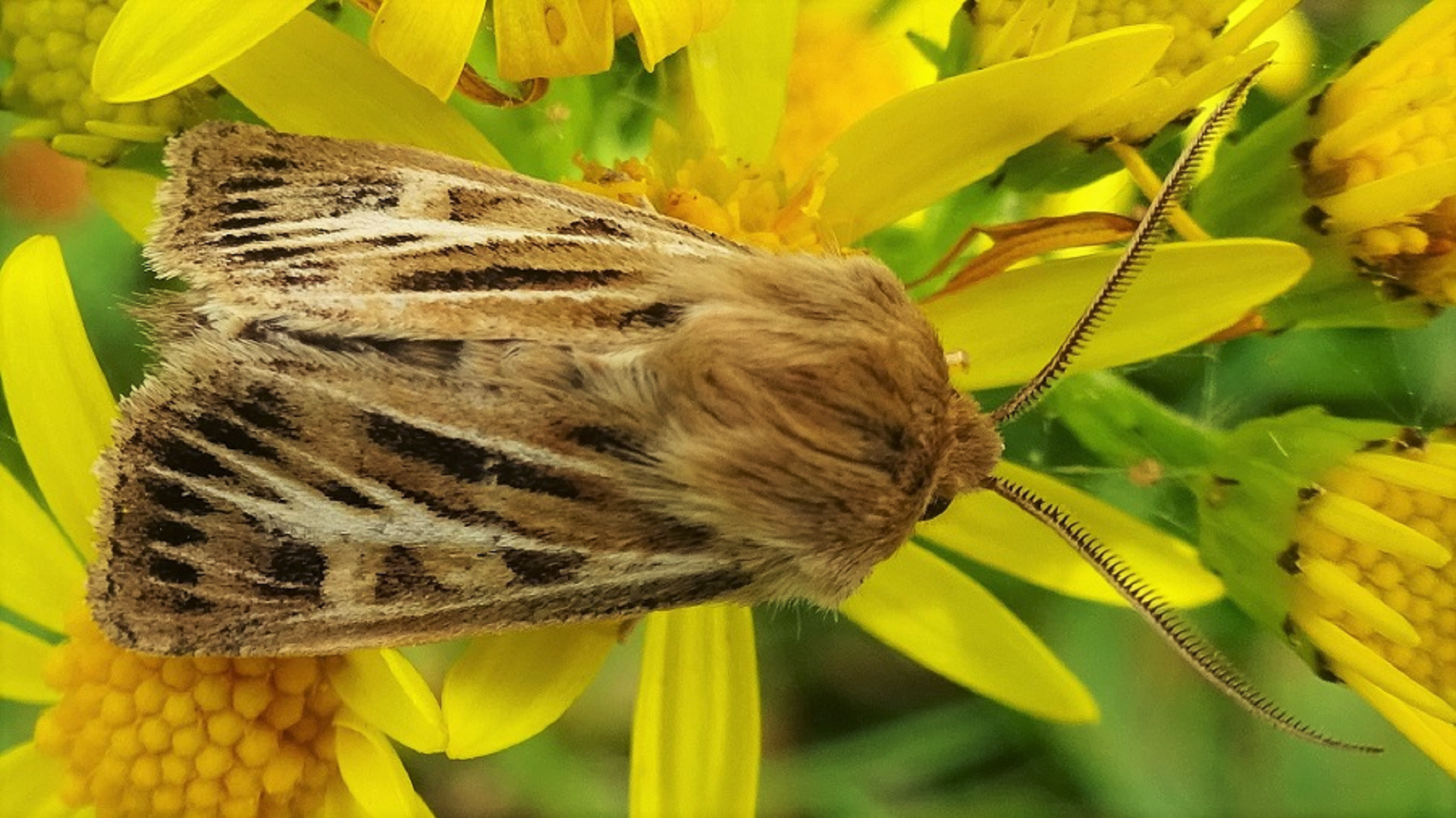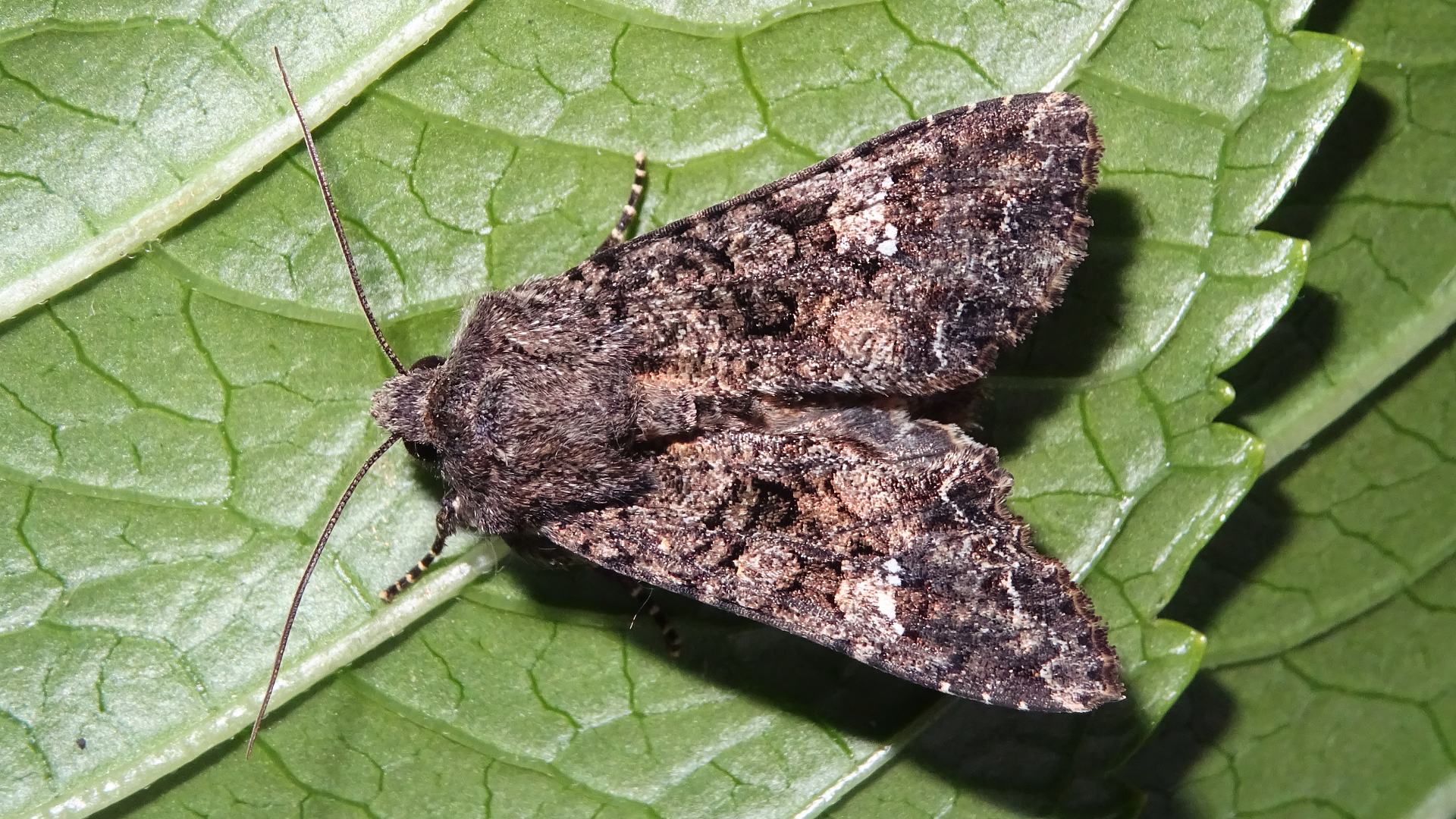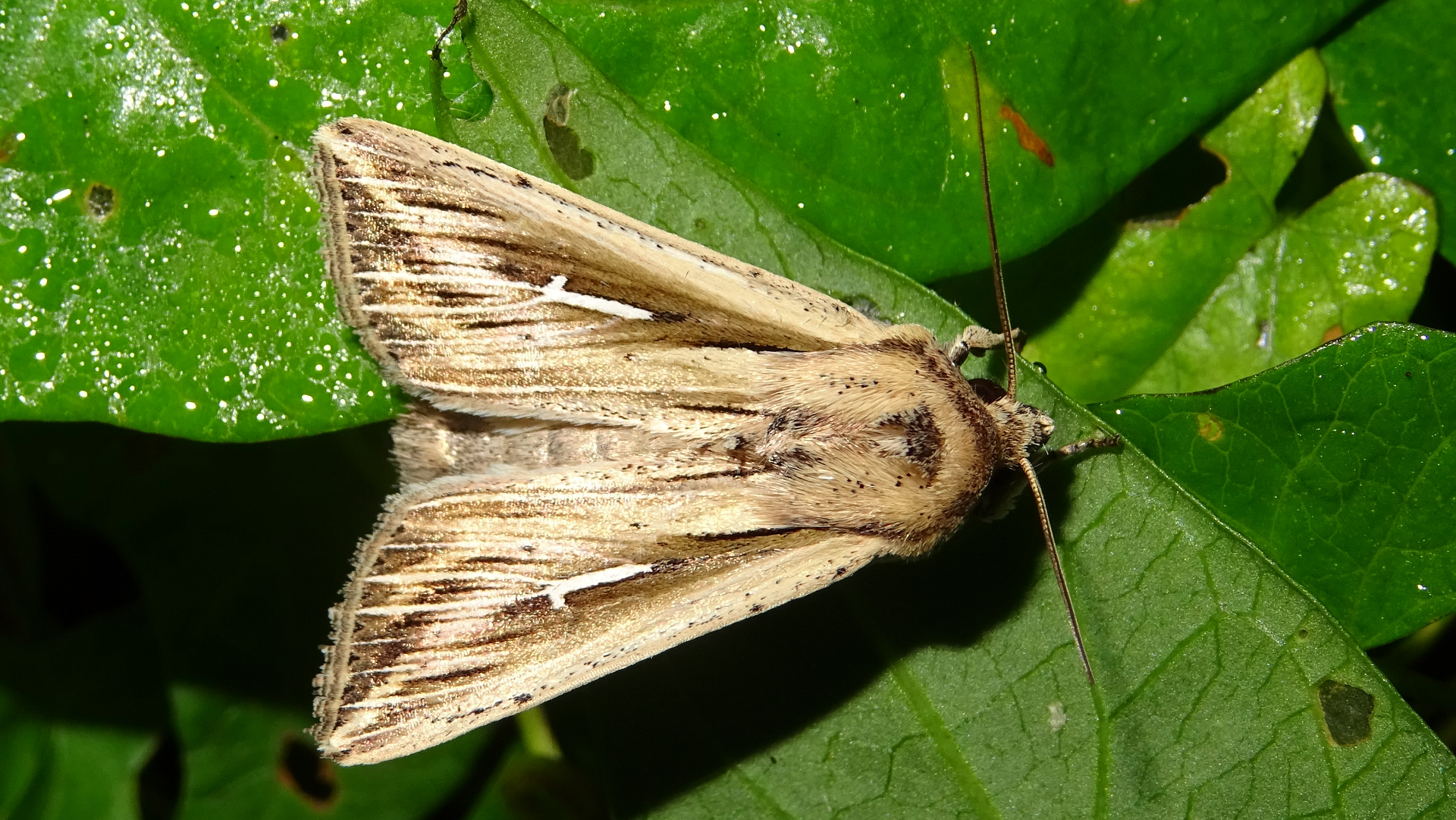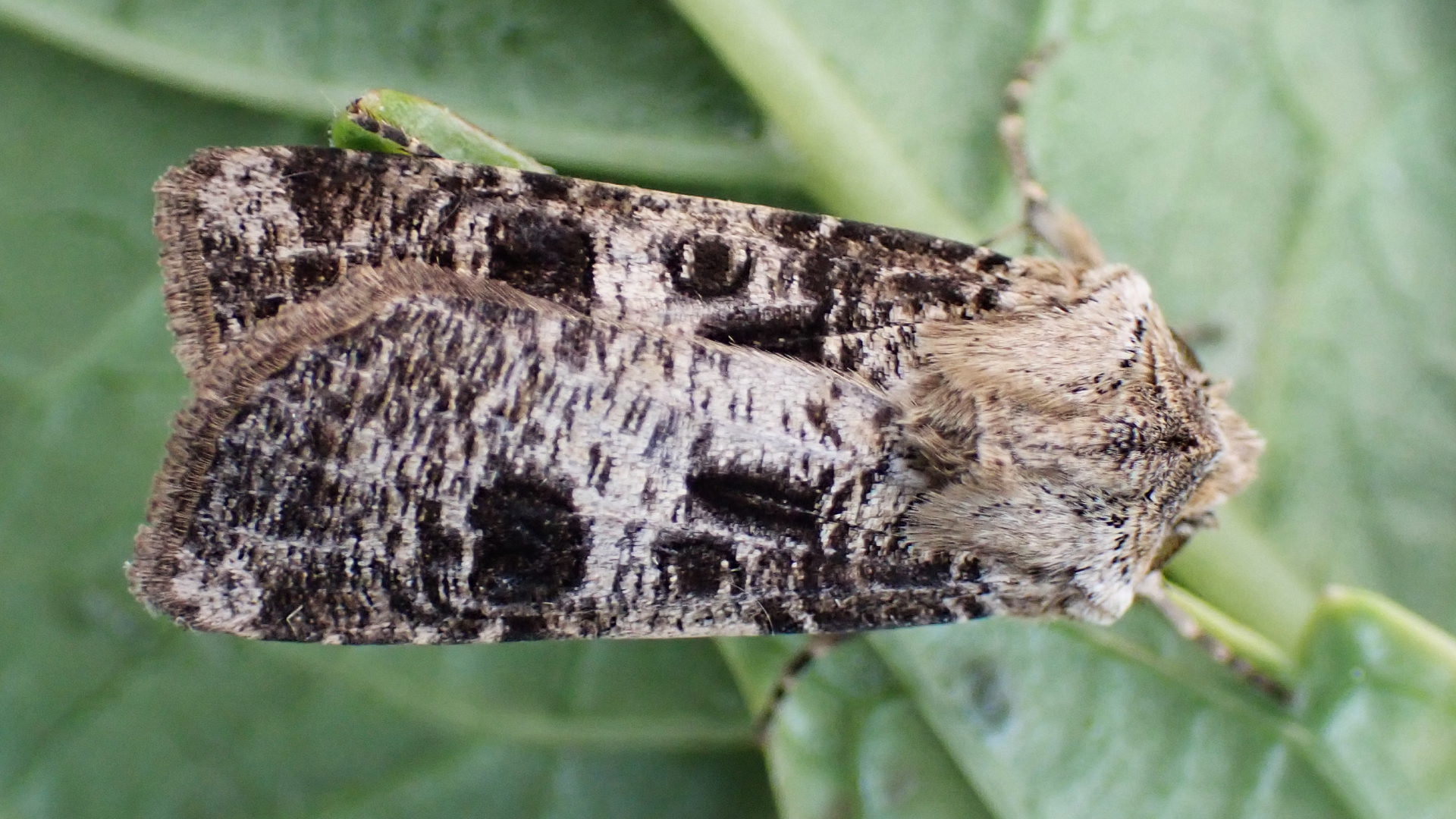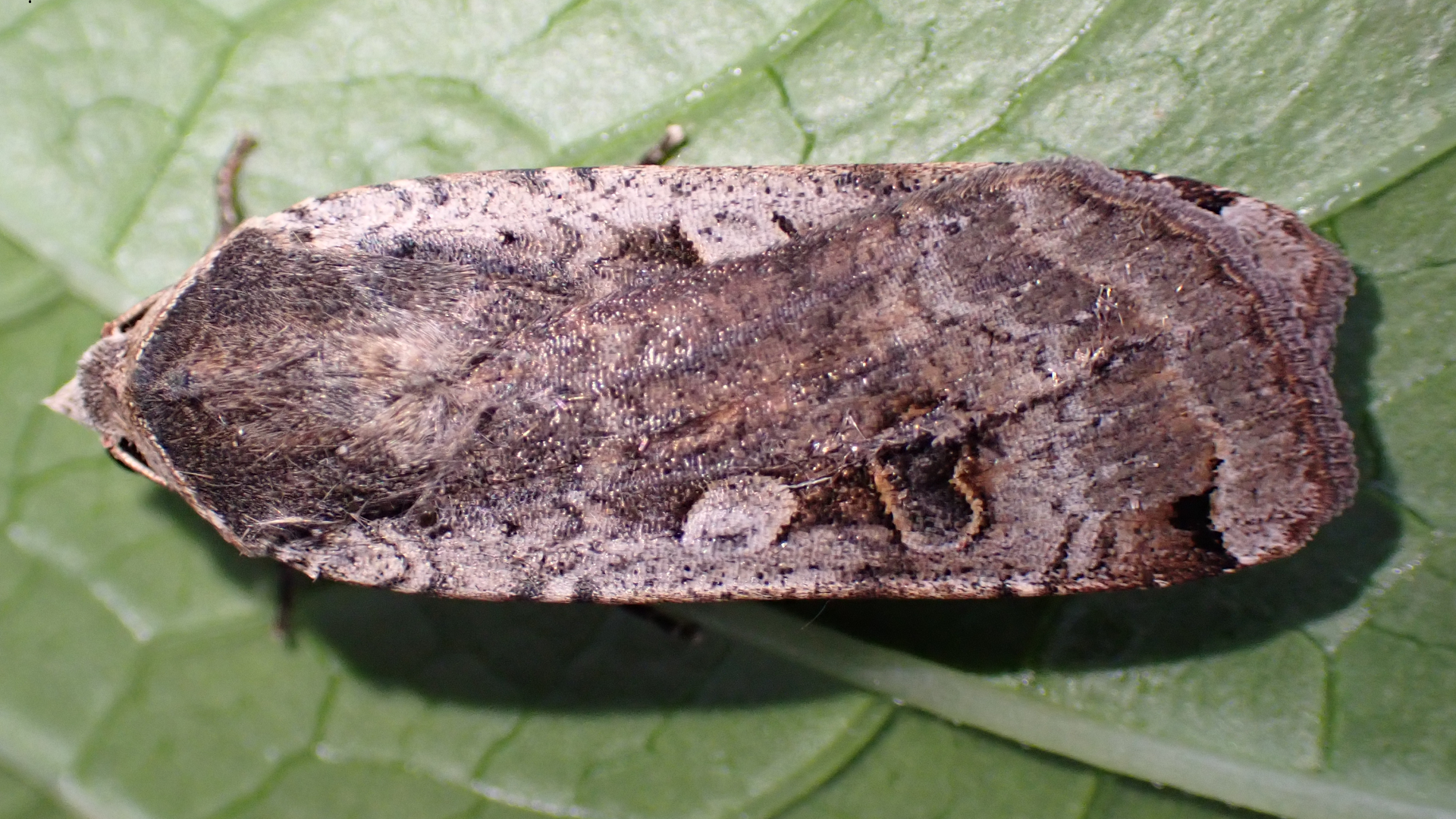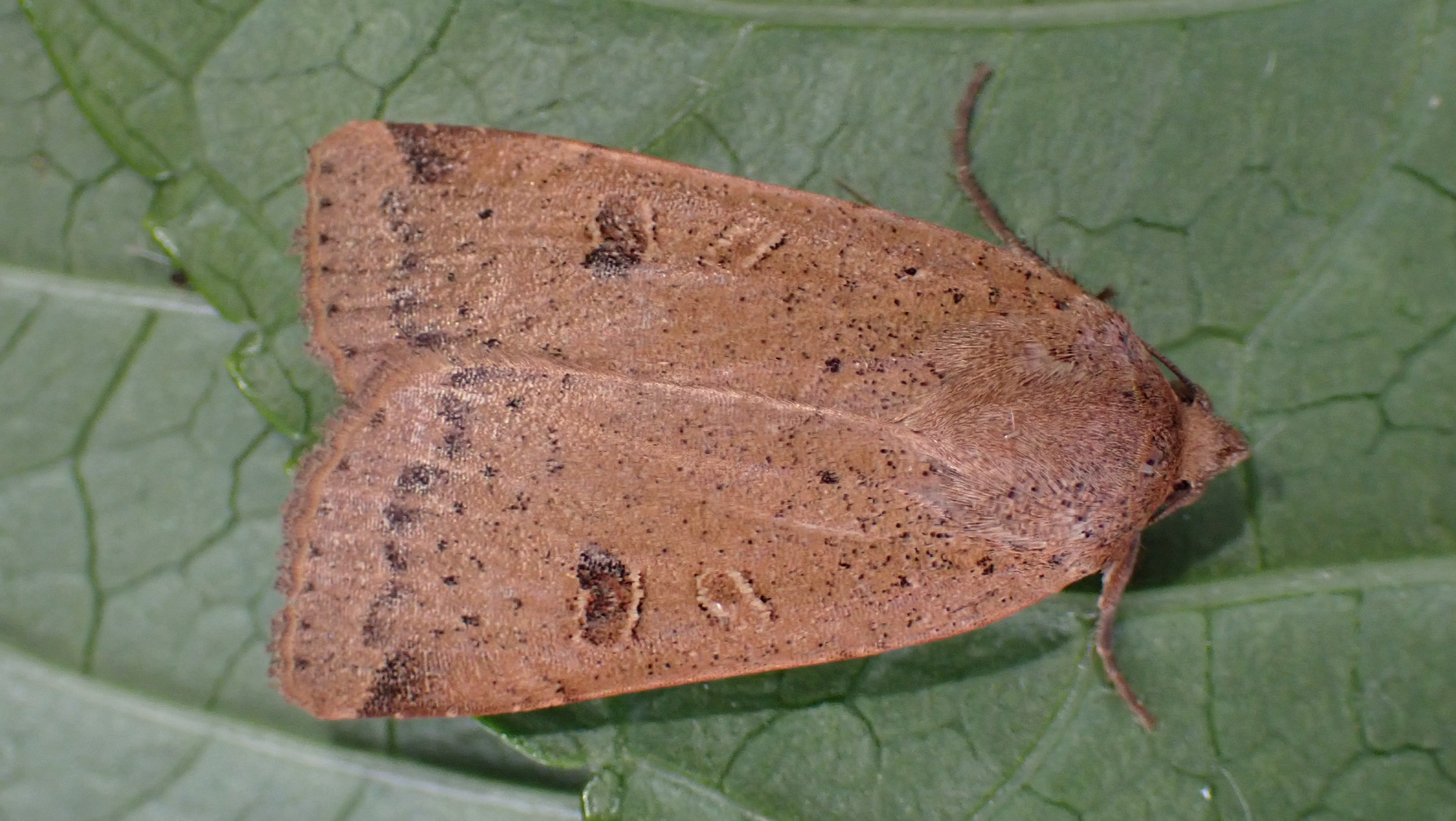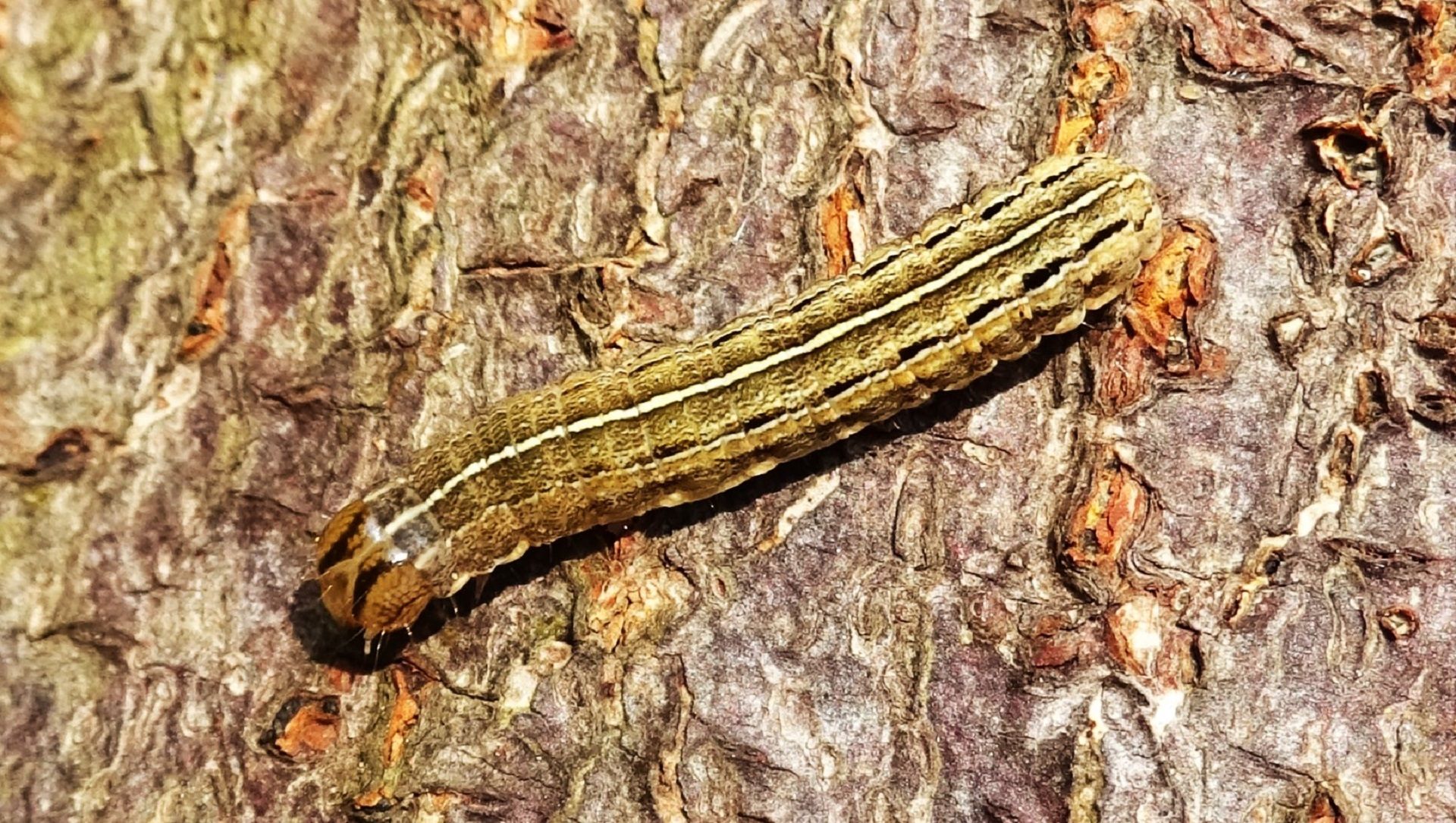INSECTS
LEPIDOPTERA / NOCTUIDAE [73]
73.015 Silver Y is a common immigrant that has an unbroken silver Y-marking on each forewing. Its larvae feed on Stinging Nettles, Hedge Bedstraw, Clover and members of the Cabbage family.
73.024 Marbled White Spot is on the wing from May until July. Its larvae feed on grasses.
73.032 Nut-tree Tussock is on the wing from April until September in two broods. Its larvae feed on various deciduous trees.
73.037 Grey Dagger
Acronicta psi
and
73.038 Dark Dagger
Acronicta tridens cannot be told apart without examination of the genitalia so they are usually recorded as the aggregate
2284x Dark/Grey Dagger agg. They fly from May until August. Their larvae feed on broadleaved trees and shrubs.
73.040 Miller flies from May to August. Its larval foodplants include Silver Birch and Alder.
73.045 Knot Grass is a common species. It lays eggs in clusters on herbaceous plants from which caterpillars usually hatch within 10 days to become fully grown within 30 days. Adults are seen from May to September in two generations. Patterning sometimes varies and they may resemble other
Acronicta species. The small white mark on the rear edge of each forewing when viewed from above is a characteristic.
73.048 Small Yellow Underwing
is a day-flying species with a preference for sunny weather and open grassy meadows. Its larvae feed on Common Mouse-ear and Field Mouse-ear.
73.058 Mullein
flies in April and May. Its colourful caterpillars feed on Aaron's Rod, Figwort and Buddleia from May to July.
2297x Copper Underwing/Svensson's Copper Underwing moths are very similar in appearance and unless the underside of the hindwing has been checked they are usually treated as an aggregate when recording. Whereas the adults are difficult to identify the caterpillars can be told apart. Larvae of both species feed on various trees and shrubs.
73.069 Early Grey
is one of the earliest moths to emerge in the year flying from March to May. Honeysuckle is its foodplant.
73.084 Marbled Beauty
is an attractive moth that is well camouflaged when resting during the day on rocks and stone. On the wing in July and August they can be attracted to light. The caterpillars feed mainly on lichens that grow on walls and rocks. Wingspan 20-25 mm.
73.099 Vine's Rustic
bears a similarity to Rustic and Uncertain moths, but is usually paler and tending to have larger, rounder stigmata. It can be found in a wide range of habitats.
73.157 Large Nutmeg frequents grassland and open woodland. It can be attracted to light. Adults fly May to July. Its larvae feed on various grasses.
73.193 Lunar Underwing frequents grassland and gardens from August to October. Its colour varies from yellowish-orange to dark brown. It has clearly defined whitish veins.
73.202 Grey Shoulder-knot is on the wing from September to May in broad-leaved woodland. There is a bold, black, antler-like mark at the forewing base. Oak is the larval foodplant.
73.206 Blair's Shoulder-knot is an autumn flyer first discovered on the Isle of Wight in 1951. Its foodplants include Cypress and Juniper.
73.219 Centre-barred Sallow is a distinctive moth that flies during autumn. It inhabits places that contain its foodplant the ash tree. This species overwinters as an egg.
73.222 Dingy Shears a dull-looking species that inhabits woodland and heathland. It flies from June until August. Larval foodplants include willow, sallow and poplar.
73.224 Merveille du Jour is thinly spread over much of the UK. On the wing during September and October it is attracted to light. Caterpillars are found on oak trees. Wingspan 52 mm.
73.233 Black Rustic flies during September and October. It inhabits heathland, grassland and woodland rides. This species feeds on herbaceous and woody plants.
73.244 Common Quaker is a common moth that flies from February to May. Larval foodplants include Birches, Sallows, Oaks, and Hazel. The ground colour of the larvae is extremely variable. Mature caterpillars are bright green. Spots on the face feet and body help with identification along with the white line across the segment above the first claspers.
73.249 Hebrew Character flies from March to May in a large range of habitats. Foodplants include herbaceous plants, bushes and trees. Named after the distinct mark on the forewing.
73.254 Antler Moth is a distinctively marked moth occurring in grassy locations. Its larvae feed on various grasses. Adults fly from June to September during the day and night. Its name is due to 'antler' marks on the wings.
Cabbage Moth frequents a range of habitats and can be attracted to light. Adults fly May to October in 2 or 3 overlapping generations. Its larvae feed on plants in the Cabbage (Brassica spp.) family.
73.300 L-album Wainscot is normally regarded as a coastal species in the UK. Inland it has a preference for brackish ditches. There are several wainscot species; this one can be distinguished by a white 'L-shape' on the wings. There are two generations each year, the first in July and the second during September and October. The caterpillars feed on various grasses. The maximum wingspan is 35mm.
73.320 Heart and Club
is on the wing from June until August. This species is shorter and broader than similar 'dart' species. The ground colour is variable. Its larvae feed on various herbaceous plants.
73.342 Large Yellow Underwing is a common species that flies from June to November. When at rest the bright yellow underwings are usually hidden. The larvae feed on herbaceous plants and grasses.
73.345 Lesser Yellow Underwing is a common moth that feeds on various herbaceous plants, mainly flying from July to October.
73.357 Square-spot Rustic caterpillars live in grassland especially where unaffected by agricultural farming. They overwinter and emerge in spring. They are about 20mm long.
© hainaultforest.net. All rights reserved.


